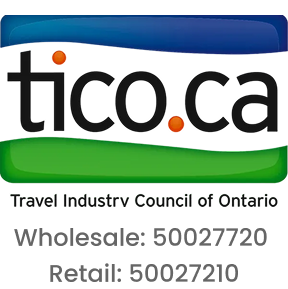20 Unforgettable Experiences Across Southern Africa
Introduction
Southern Africa is a land of untamed beauty, where golden savannas roll beyond the horizon, thundering waterfalls carve through ancient landscapes, and majestic animals roam free in some of the last remaining wild places on earth. From the cosmopolitan cities of South Africa, to the raw power of Victoria Falls in Zimbabwe, the lush deltas of Botswana, and the endless dunes of Namibia’s hauntingly beautiful desert, this region is a symphony of contrasts—thrilling, romantic, and unforgettable. Whether it’s tracking the Big Five on a safari, learning about centuries-old traditions from indigenous tribes, or sipping world-class wine beneath the stars, a trip to Southern Africa is a journey into the extraordinary. Join us as we uncover 20 unparalleled experiences that will shift your perspective and maybe make you fall in love with these Sub-Saharan countries.
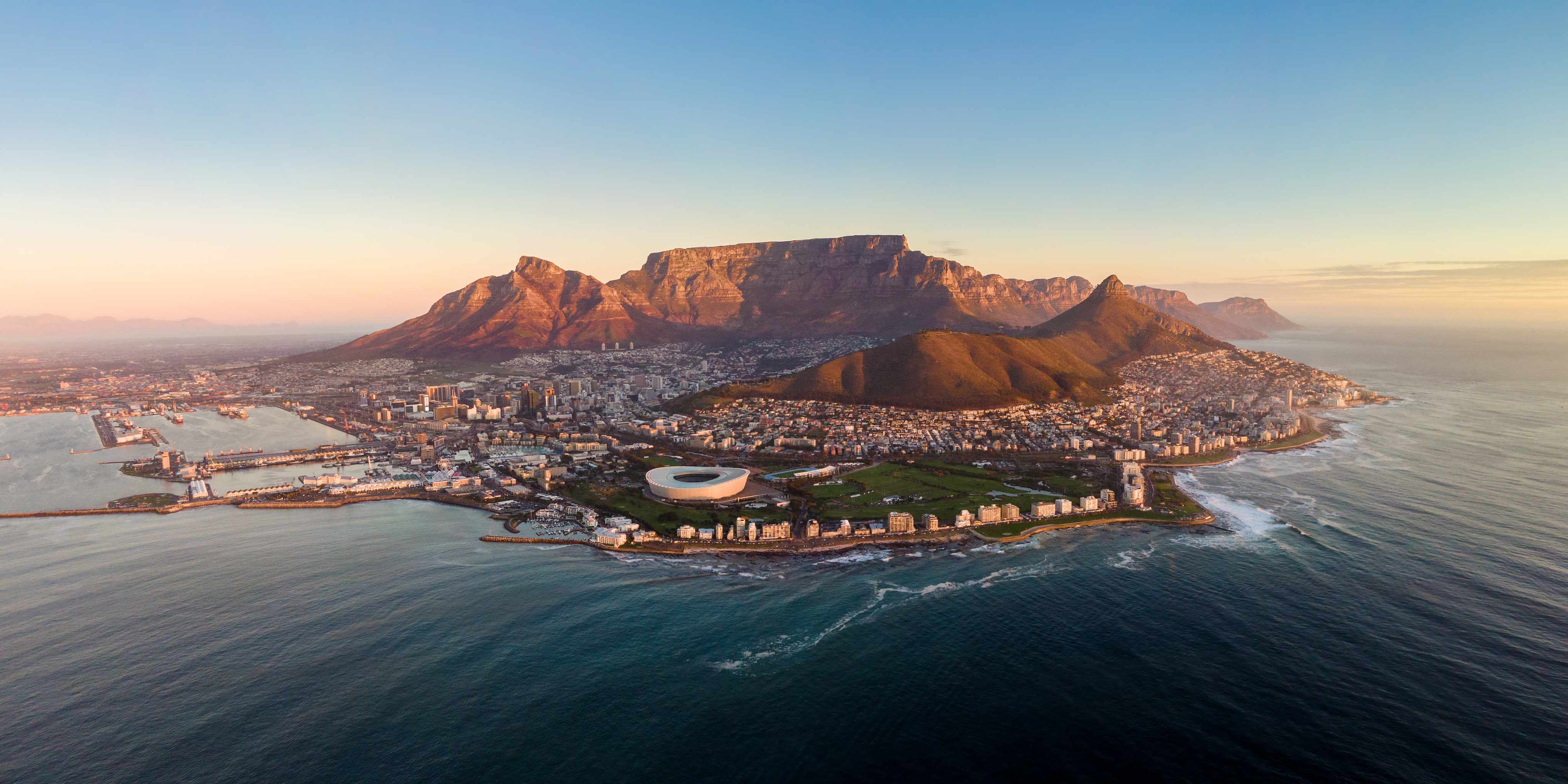
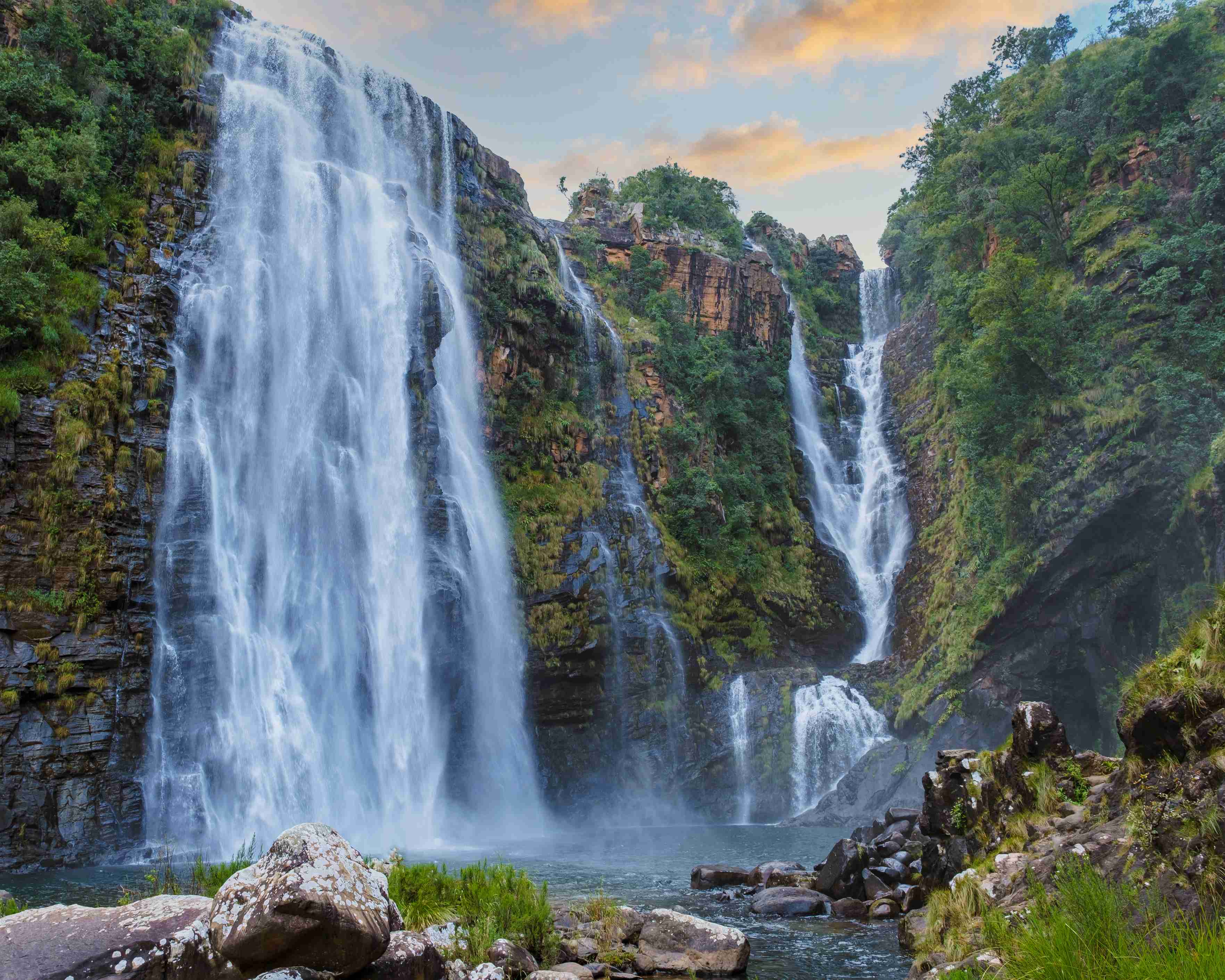
SOUTH AFRICA
South Africa Introduction
South Africa beckons visitors with accessible first-time safaris, high energy cities, gorgeous coastlines, an upscale wine country, and family-friendly beach activities. It’s a country with diverse wildlife, international cuisine, stunning landscapes, and warm, welcoming citizens, despite having to confront the long term effects of racial segregation.
This land’s first known human residents were the Khoekhoe and the San who arrived at some point before 150,000 years ago. The Bantu ethnic groups’ migration brought them to South Africa by around 300 CE. The Portuguese were the first Europeans to explore the area in the 13th century while looking for a new route to China’s Silk Road. The Dutch established a trading post at Cape Town in 1652, and the British invaded in 1795. Diamond and gold discoveries created further conflicts between the Boer (South Africans of Dutch descent) and the British Empire. From 1948-1994, Afrikaner nationalism instituted Apartheid until universal suffrage was achieved in 1990.
Explore Johannesburg
Most international visitors will fly into Johannesburg, known as “The City of Gold,” Joburg, or Jozi. Joburg is Africa’s most populous city with 4.8 million people and serves as South Africa’s financial and industrial center. The city is a relatively young one, having been established in 1886 after gold was discovered on a farm. However, it has lived through an extremely complicated history of colonialism, apartheid, and resistance. Just a couple decades ago, Johannesburg’s reputation was one of crumbling infrastructure and high crime—somewhere you would land and drive away from as quickly as possible. But, recent revitalization efforts have turned the city into a vibrant cultural and artistic hub, popping off with restaurants and nightlife.
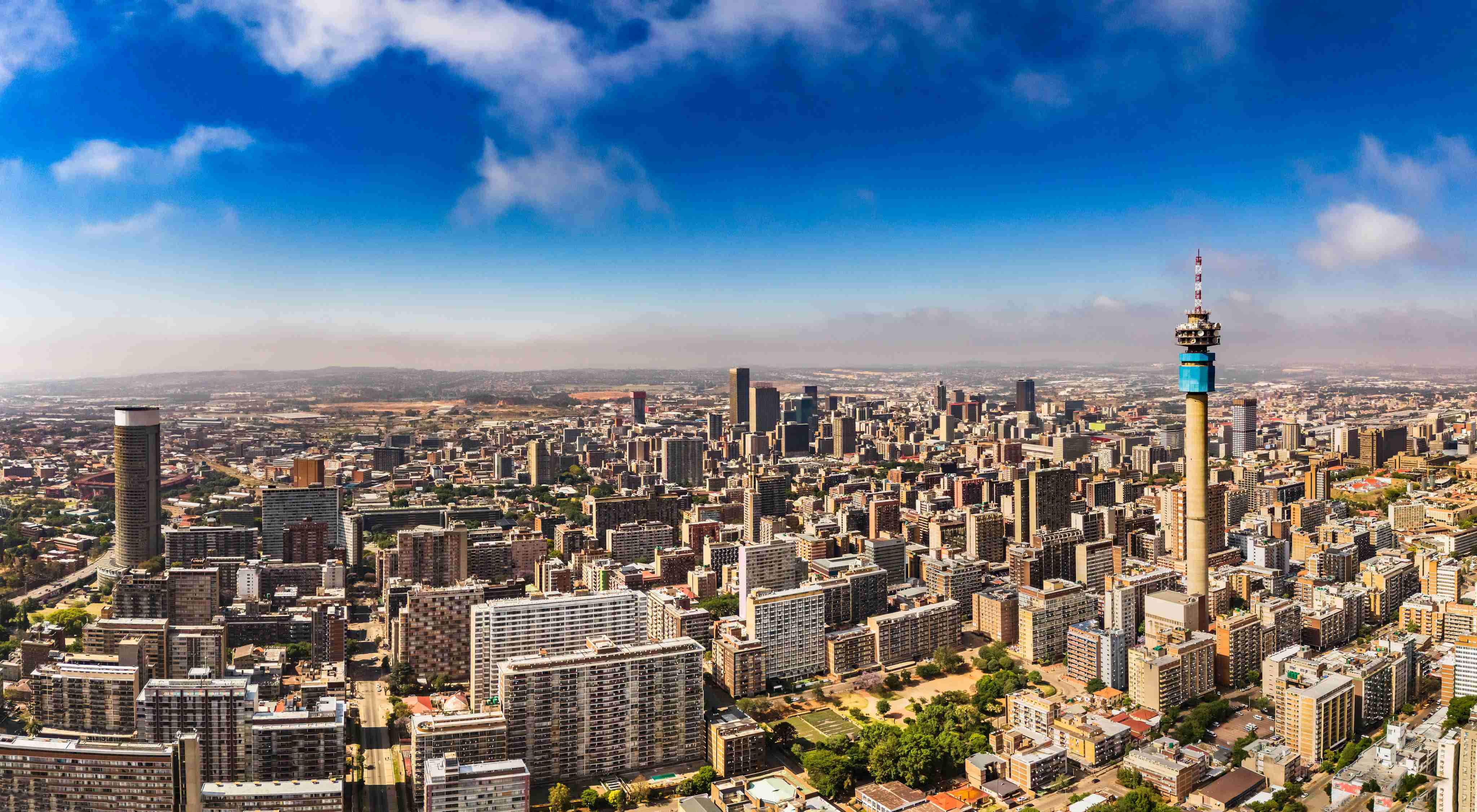
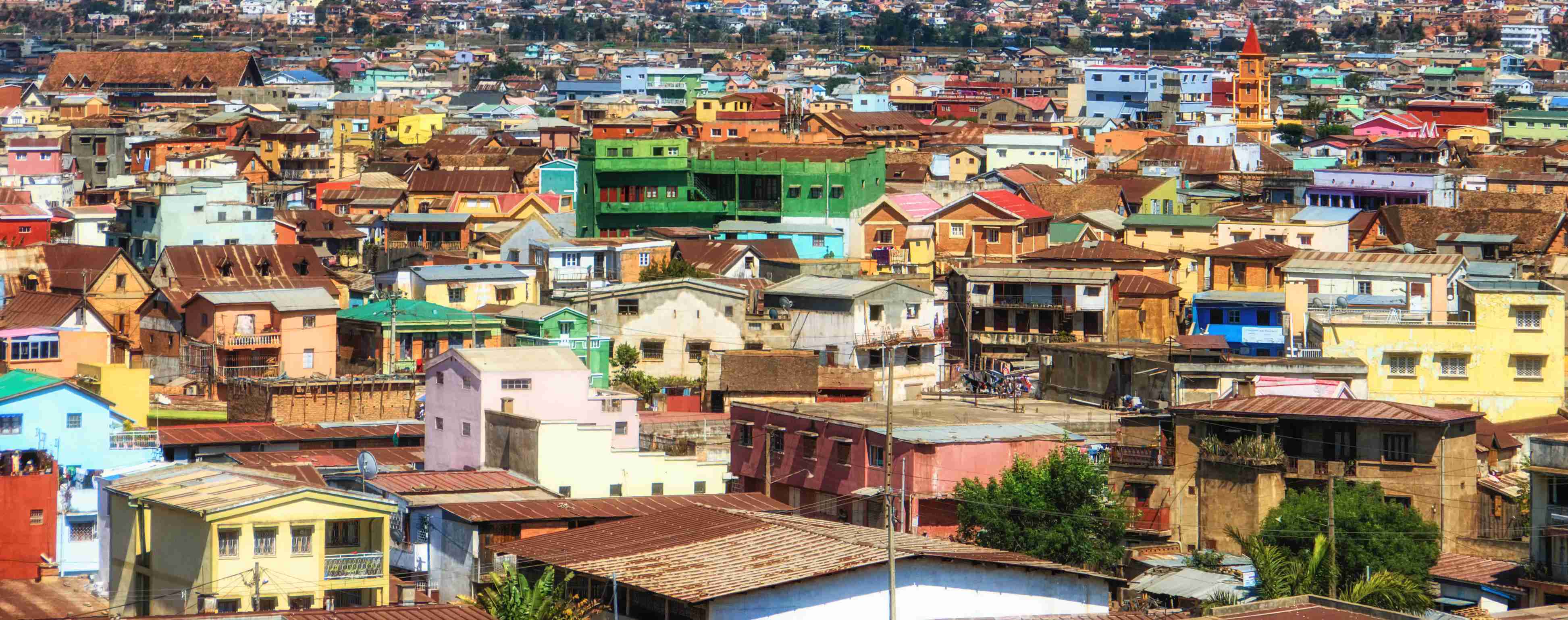
Start with a visit to the Apartheid Museum for an emotionally-charged, interactive exhibit of South Africa’s history of segregation and oppression through the 20th century, which will help you understand the challenges the country has faced. Take a guided tour of Soweto— an outskirt settlement for African laborers during the gold mining days before becoming a blacks-only township during apartheid—and visit Mandela House, the former president’s modest home, now preserved as a museum. Try authentic African dishes at 1947 on Vilakazi Street like mogodu (tripe stew) with a side of pap (maize porridge) or chakalaka (spicy tomato-based relish).
Stroll through the Maboneng Precinct in the Central Business District for street art, boutiques, and cafes. Visit Sandton City if you’re looking for a sparkling, world-class shopping mall or the cosmopolitan arts district of Rosebank for contemporary galleries, a Sunday flea market, glassy office towers and hotels, and dine at The Shortmarket Club, serving modern, European dishes with Asian-inspired flavors in a rich, Art Deco-inspired space.
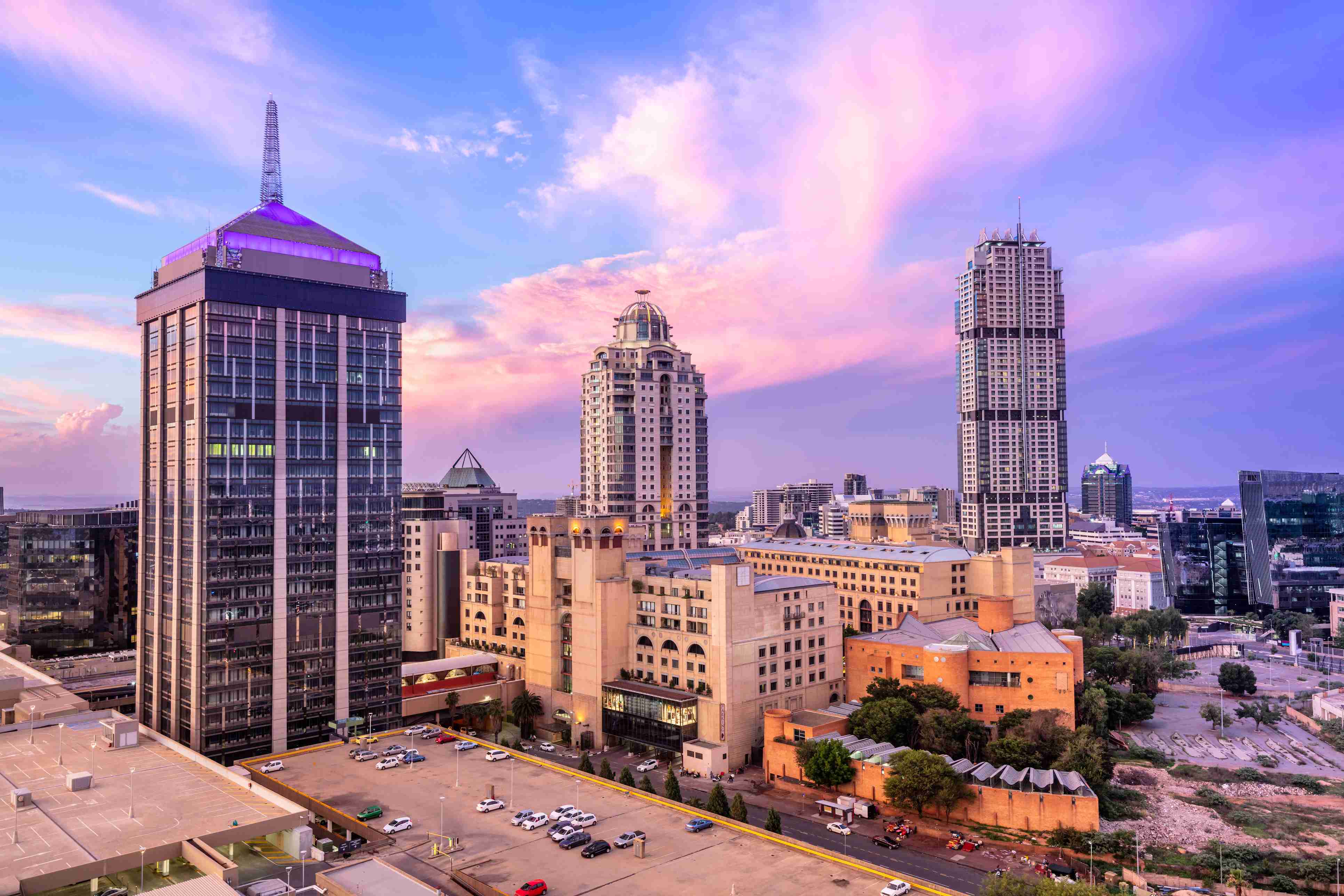
Safari in Kruger National Park
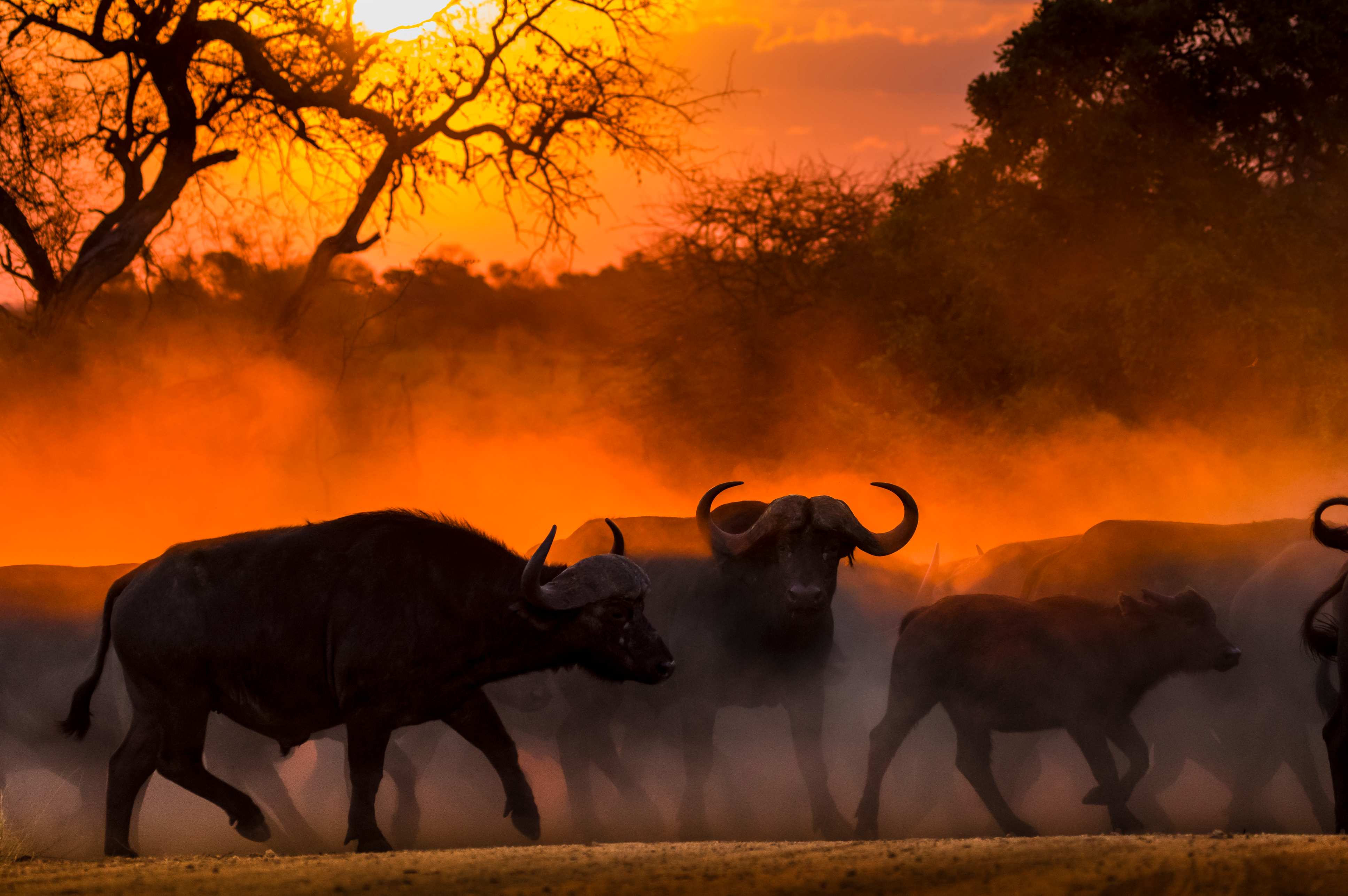
One of the most reliable places to see the Big Five (leopard, lion, rhinoceros, African elephant, and Cape buffalo) in their natural habitat is South Africa’s largest national park, Kruger. It’s a 4.5 hour drive from Johannesburg and 256 miles (412 kilometers) east. The park’s well-maintained roads and variety of activities (game drives, hiking trails, bush walks, and bird watching) and lodging options make it accessible and comfortable for visitors. The sheer concentration of wildlife (there are more species of large mammals than on any other African game reserve), the diverse landscapes (from savanna grassland to marula and baobab trees), and access to Iron Age archaeological sites deliver the park’s award-winning safari experience.
Marinate in the Mother City of Cape Town
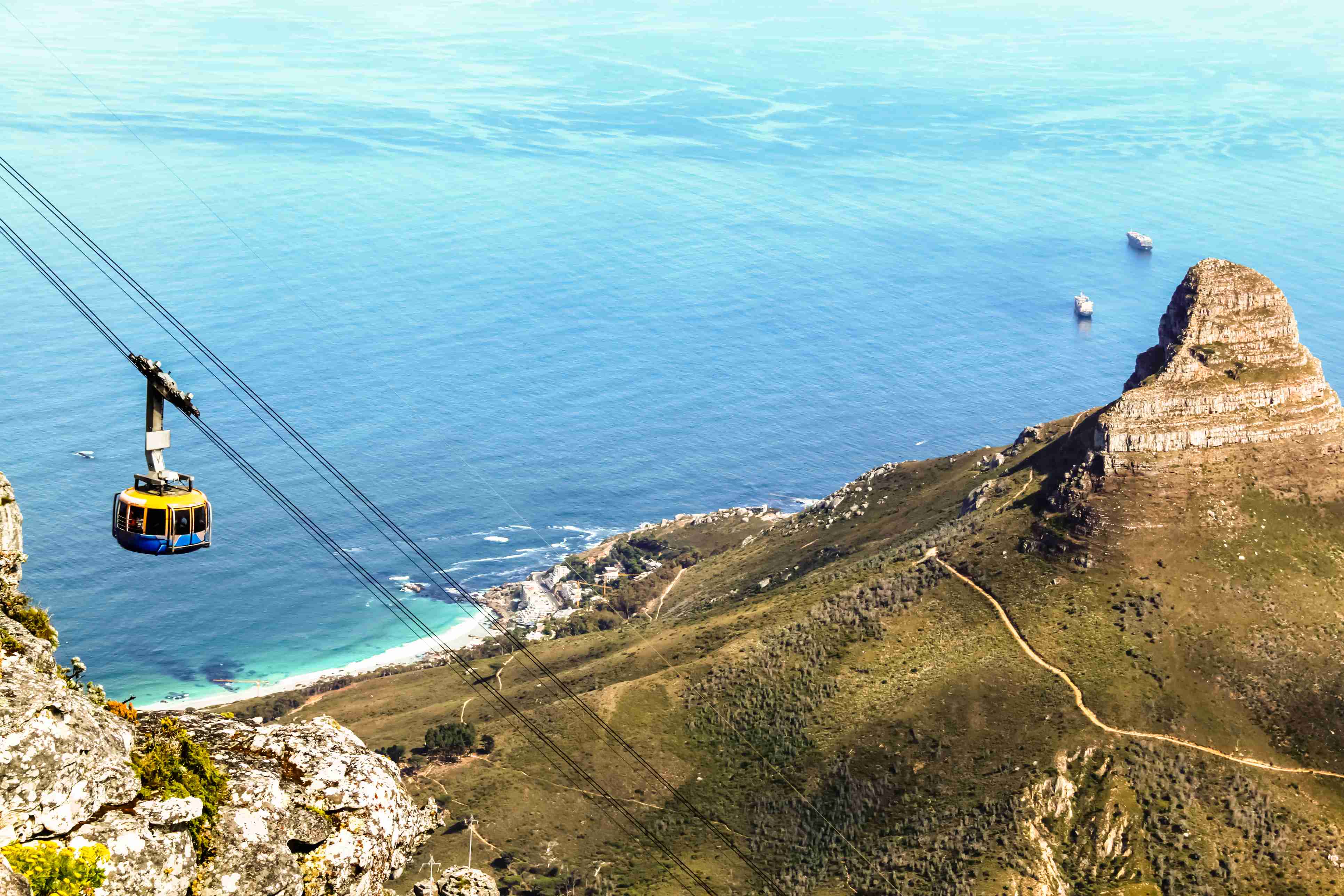
In the south of the country, Cape Town, the first European settlement, bloomed into a metropolis by the early 20th century. In Greek “metropolis” means “mother city.” The nickname has stuck but so has a welcoming and liberal outlook born from the city’s multicultural background.
The spectacular beaches are world-famous (Clifton, Camps Bay, Llandudno, St. James, and penguin-filled Boulders Beach) and a cable car ride up one of the 7 Natural Wonders of the World, Table Mountain, is a must for panoramic views of the drop-dead gorgeous city and coastline. Get your cameras ready for the colorfully-painted houses and cobblestone streets of Bo-Kaap, originally an area where convicts, slaves, and exiles from India, Sri Lanka, Indonesia, and Malaysia settled after the 1830s. It was designated a Muslim neighborhood during Apartheid. While exploring, you can visit the first mosque established in the country and sample local specialities like Cape Malay curries and samosas. Shop, dine, and visit an aquarium at the Victoria & Alfred Waterfront. Then take the ferry to Robben Island, a UNESCO World Heritage Site that was a military base, leper colony, mental institution, and the prison that held Nelson Mandela.

Drink your way through the Cape Winelands
Sample world-class wines and fill up on gourmet farm-to-table cuisine in the culinary heart of South Africa. The country’s winemaking history stretches back nearly 400 years, but production was boycotted during Apartheid. In the 1990s, artisanal producers returned to vinification, so the country’s current production is considered a hybrid of the Old and New Worlds.
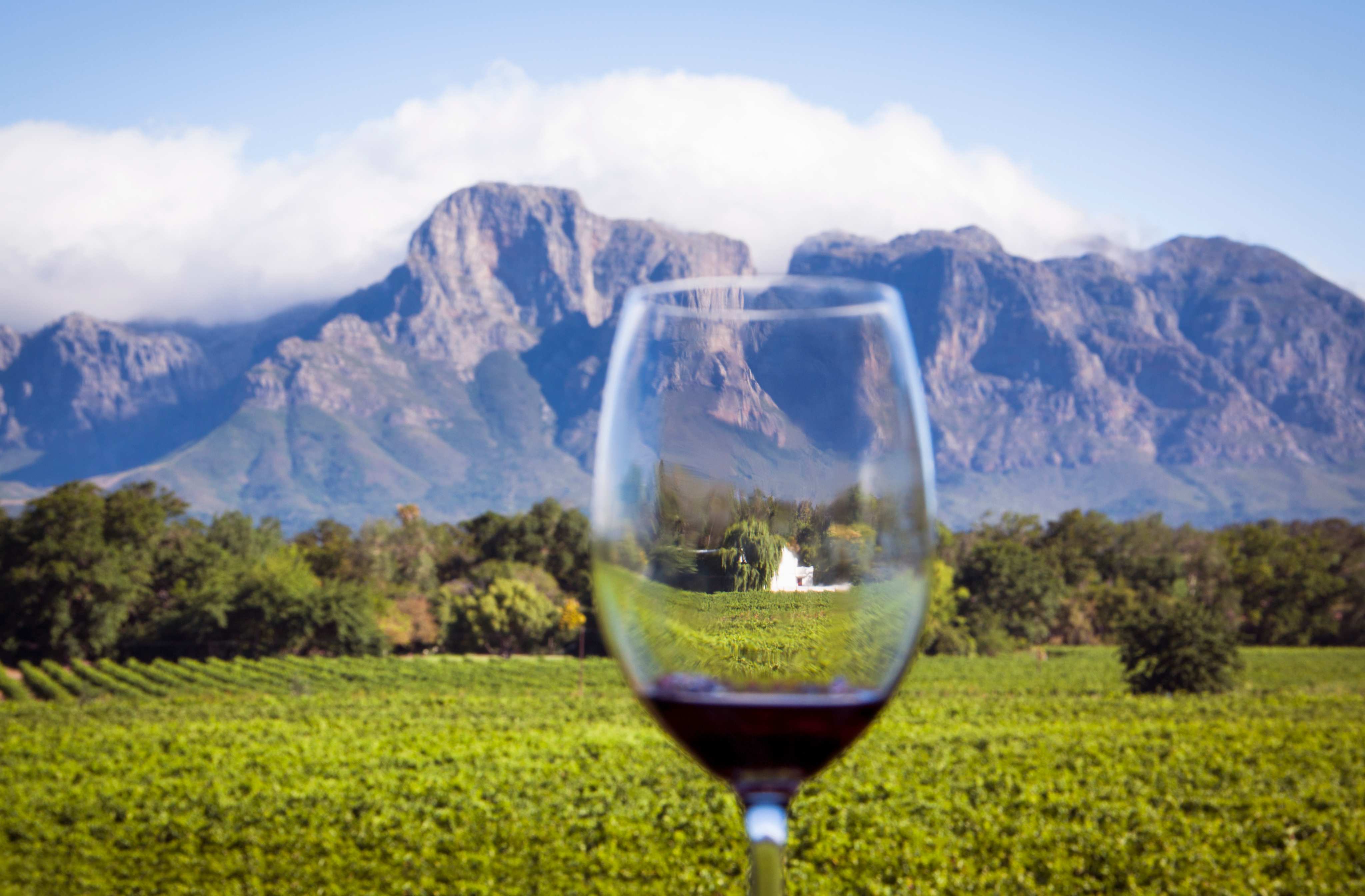
Oak-lined Stellenbosch was established in 1679 and is famous for its cabernet sauvignon, merlot, bordeaux blends, and pinotage—the only new grape variety created outside of Europe. The area is home to more than 150 wineries and is filled with a mix of white Cape Dutch buildings and Georgian and Victorian architecture. The town of Franschhoek, established by 18th-century French Huguenots, is cozier and less commercial than Stellenbosch and offers a hop-on, hop-off Wine Tram from which you can visit many of the wineries. Paarl, “The Pearl of the Winelands” is in Drakenstein Valley and is the third oldest town in the country, behind Stellenbosch and Cape Town. It’s considered the birthplace of Afrikaans, one of the country’s eleven official languages, and you can visit the striking monument commemorating its establishment as an official language. Paarl is also famous for innovative blends like white pinotage and tempranillo. If you can’t get a reservation at Eike in Stellenbosch, La Petite Colombe in Franschhoek, or Babylonstoren near Paarl, there are plenty of delicious bistros and restaurants serving innovative tasting menus.
Drive the Garden Route
A few hours from Cape Town lies a spectacular stretch of coastline between Mossel Bay and Storms River known as the Garden Route. The range of landscapes, wildlife, and activities you can experience driving along its 124 miles (200 kilometers) makes it a popular family holiday.
You can kayak, ride horses, and cage dive with sharks in Mossel Bay. Three of the country’s best golf courses are located in George. If you want uncrowded white sand beaches, stop at Wilderness. Sedgefield is Africa’s first Cittaslow town, part of an international network of communities committed to embracing a slower pace of life while preserving local traditions and promoting sustainability. Goukamma Nature Reserve protects sand dunes and dense coastal forest filled with monkeys, porcupines, and honey badgers. The town of Knysna is famous for fresh oysters, wooden furniture, and an extensive lagoon. Meet orphaned and rescued elephants at the Knysna Elephant Park . Safe swimming beaches, water sports, and hiking trails make Plettenberg Bay a party town in the summer. In Tsitsikamma National Park, hike through indigenous forests, try to spot dolphins, Cape Clawless otters, and black birds known as African oystercatchers, or try a death-defying jump at Bloukrans Bridge, one of the world’s highest bridge bungee jumping sites.
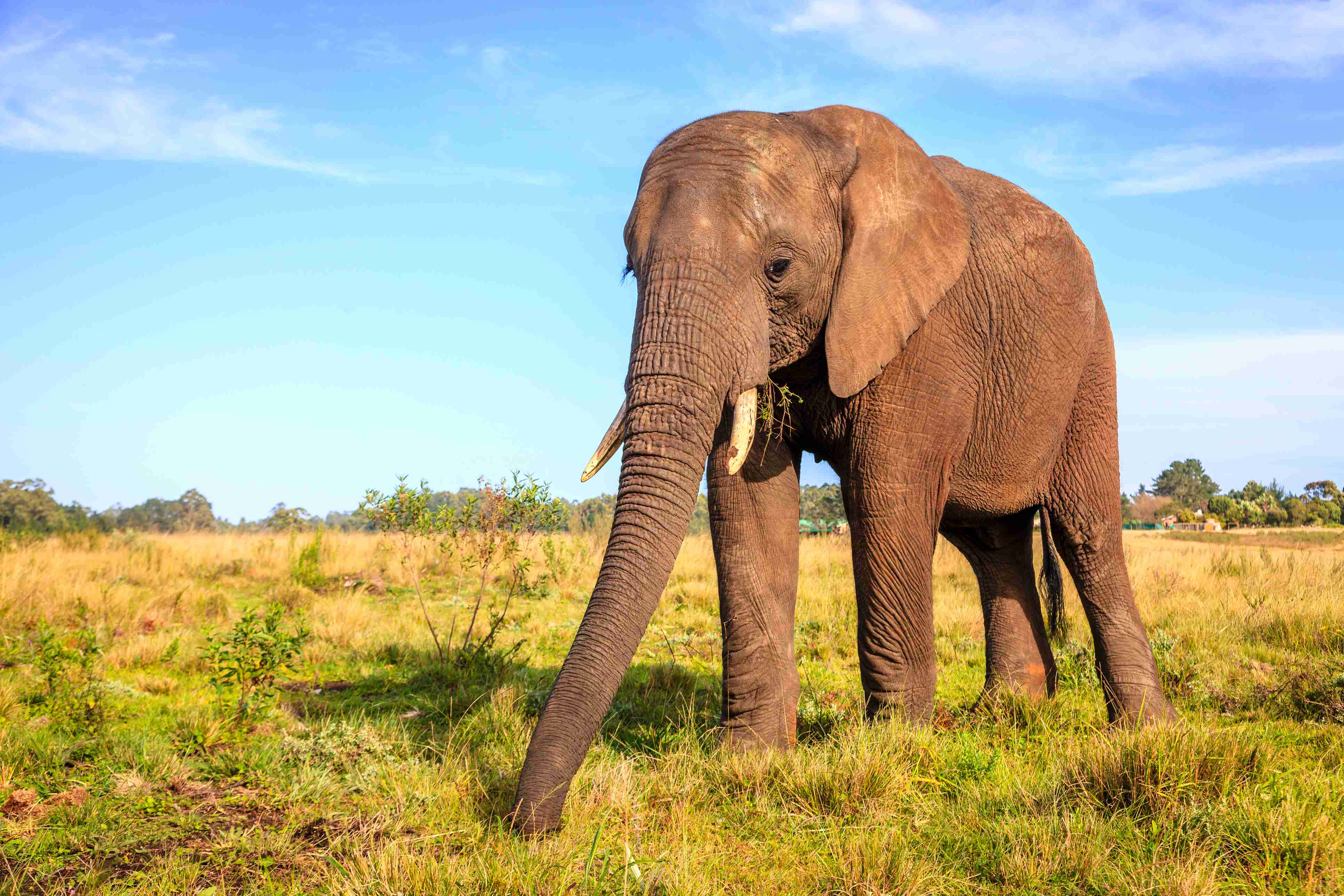
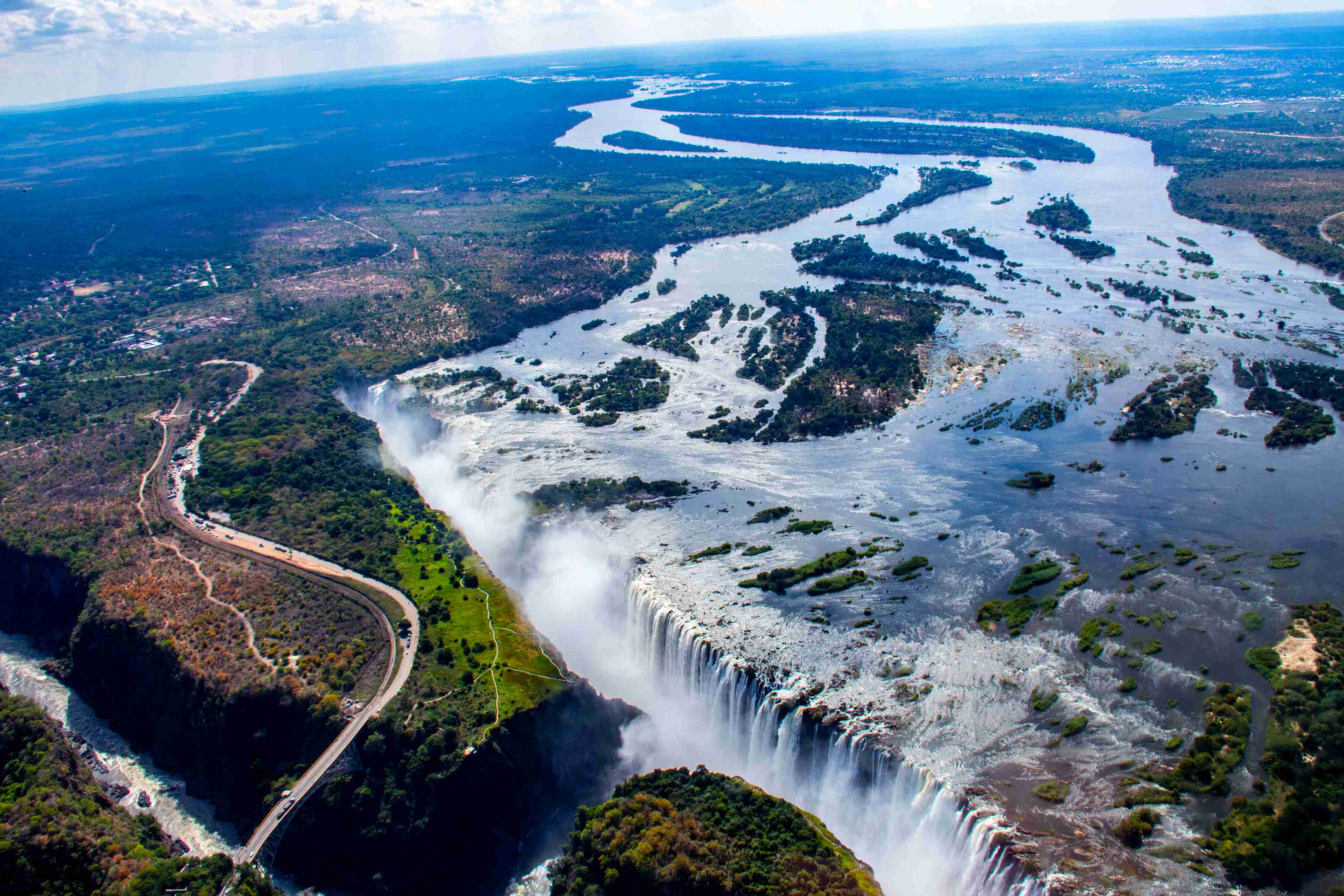
ZIMBABWE
Zimbabwe Introduction
Zimbabwe (known informally as Zim) offers visitors high biodiversity and plenty of wildlife viewing opportunities across the savanna and open woodlands, unique granite landscapes, and thrilling river adventures. Tourism to Zimbabwe has been on the uptick in recent years with increased marketing, investments in infrastructure, and upgraded airports. And, the people are known to offer warm hospitality.
The Shona tribe arrived in the 9th century and around 70% of Zimbabwe’s 16 million citizens speak Shona today. Ndebele speakers make up about 20%, the language of former refugees from South Africa’s Zulu kingdom who settled in the 19th century. The British colonized the country for most of the 20th century and named the country Rhodesia. Independence arrived only in 1980 after 15 years of war.
Marvel at Victoria Falls
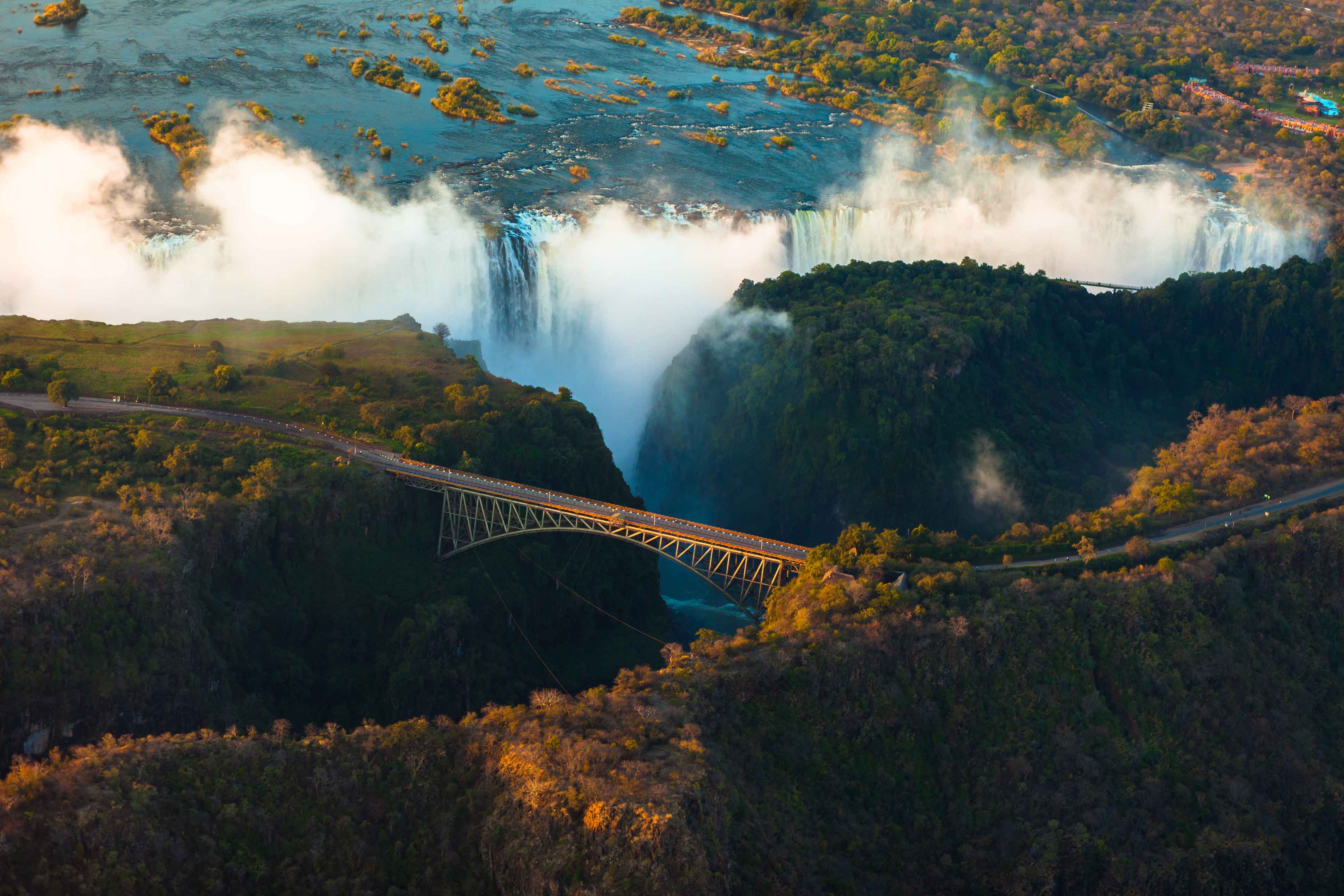
The world’s largest waterfall and one of the Seven Natural Wonders of the World is known locally as Mosi-oa-Tunya, or “The Smoke That Thunders,” due to its roar and misty spray. It is indeed as colossal and mythical as you’d expect the world’s largest uninterrupted sheet of falling water would be, stretching 5,604 feet (1,708 meters) across and 354 feet (108 meters) high. Two thirds of it sits on the Zimbabwe side and the rest is in Zambia . You can walk around to the varying viewing points, fly over the falls, or get your adrenaline pumping with rafting, ziplining, skydiving, and bungee jumping. If you want something less aggressive, try a sunset cruise on the Zambezi River. Relax with a cocktail and watch hippos, crocodiles, and elephants along the riverbanks.
Go on Safari in Hwange National Park
The largest national park in Zimbabwe covers 5,657 square miles (14,651 square kilometers) and is home to one of the world’s largest elephant populations – around 45,000 of them. You can also try to catch sight of some of the 400 species of birds or 107 mammals, including lions, leopards, cheetahs, giraffes, impalas, wildebeest, and hyenas. Although it is technically a Big Five reserve, the rhinos are protected by local scouts and not currently roaming. The park sits on the edge of the Kalahari desert and gives life to the area through 60 watering holes.
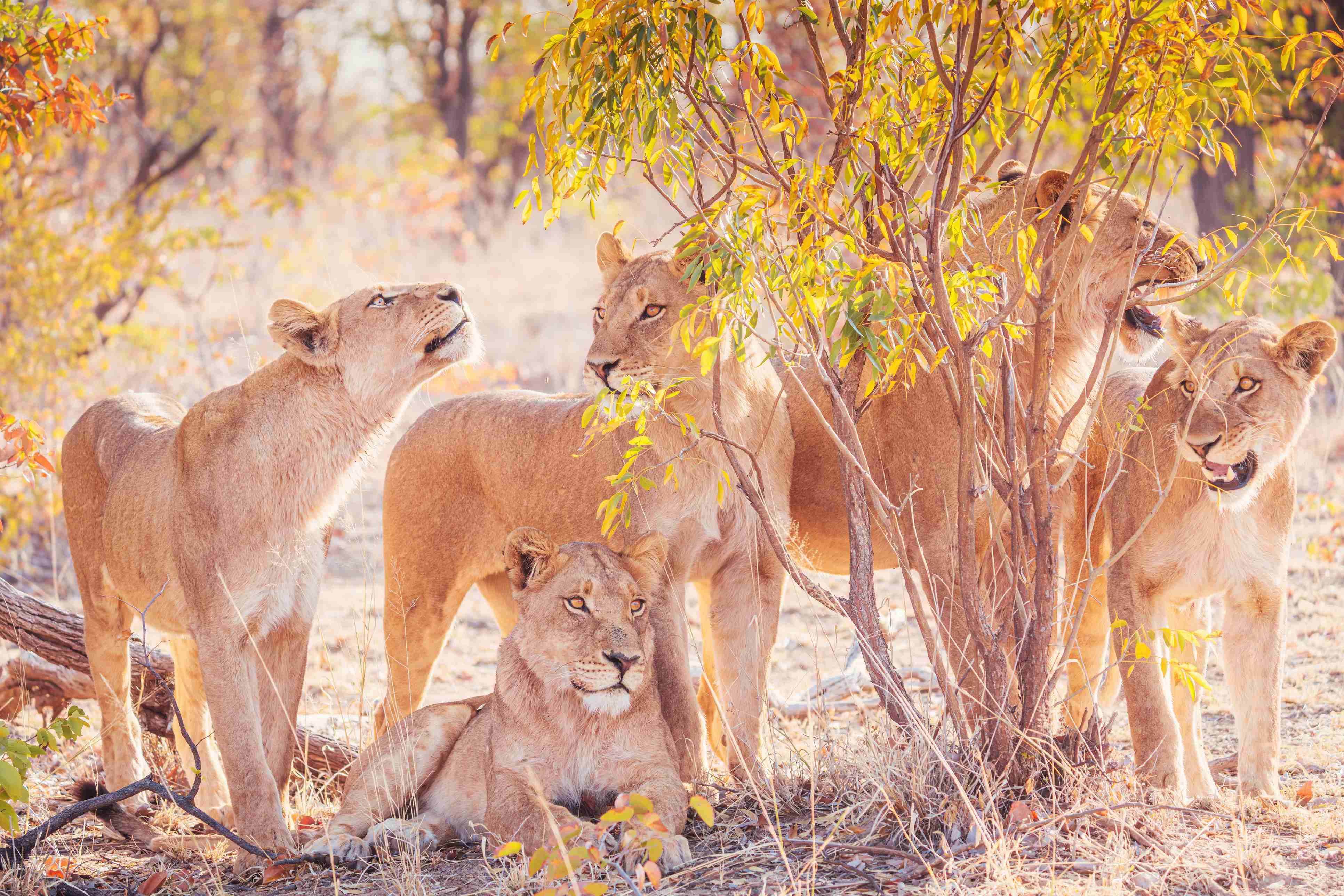
Walk Amongst the Animals in Mana Pools National Park
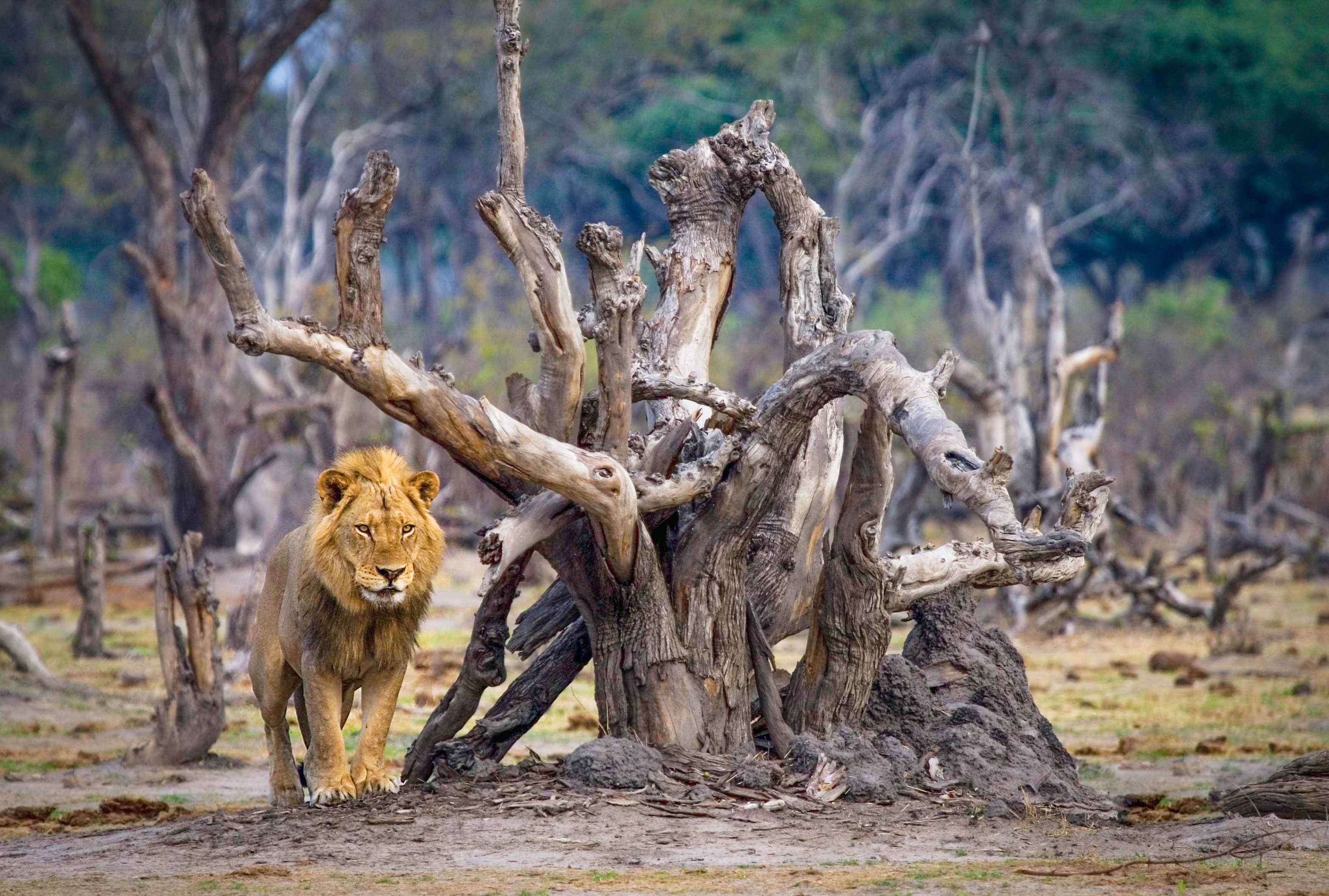
This UNESCO World Heritage Site is a remote area located in northern Zimbabwe which offers unprecedented opportunities to immerse yourself in the rugged wilderness through guided walking and canoe tours. (You could even walk around without a guide, but that seems exceedingly risky around potential encounters with hippos, crocodiles, elephants, big cats, and wild dogs.) It’s definitely an off-the-beaten path experience that lets you access secret spots on foot. The Mana Pools are four permanent watering holes that support the wildlife, and the forests of acacia, baobab, fig, mahogany, and ebony trees also provide unique habitats.
Hike in Matobo National Park
See stunning, otherworldly landscapes of kopjes (giant boulders balanced on top of each other), domes, and spires carved out of the granite through erosion at Matobo National Park. You can also admire cave paintings from the first inhabitants of Zimbabwe that were made some 13,000 years ago. Matobo is home to one-third of the world’s species of eagles, including black eagles, Cape eagle owls, and African hawk eagles. It is famous for its black and white rhino population. Cecil John Rhodes, an English mining magnate-turned-Prime Minister of the Cape Colony and the reason the country was once called Rhodesia, is also buried here.
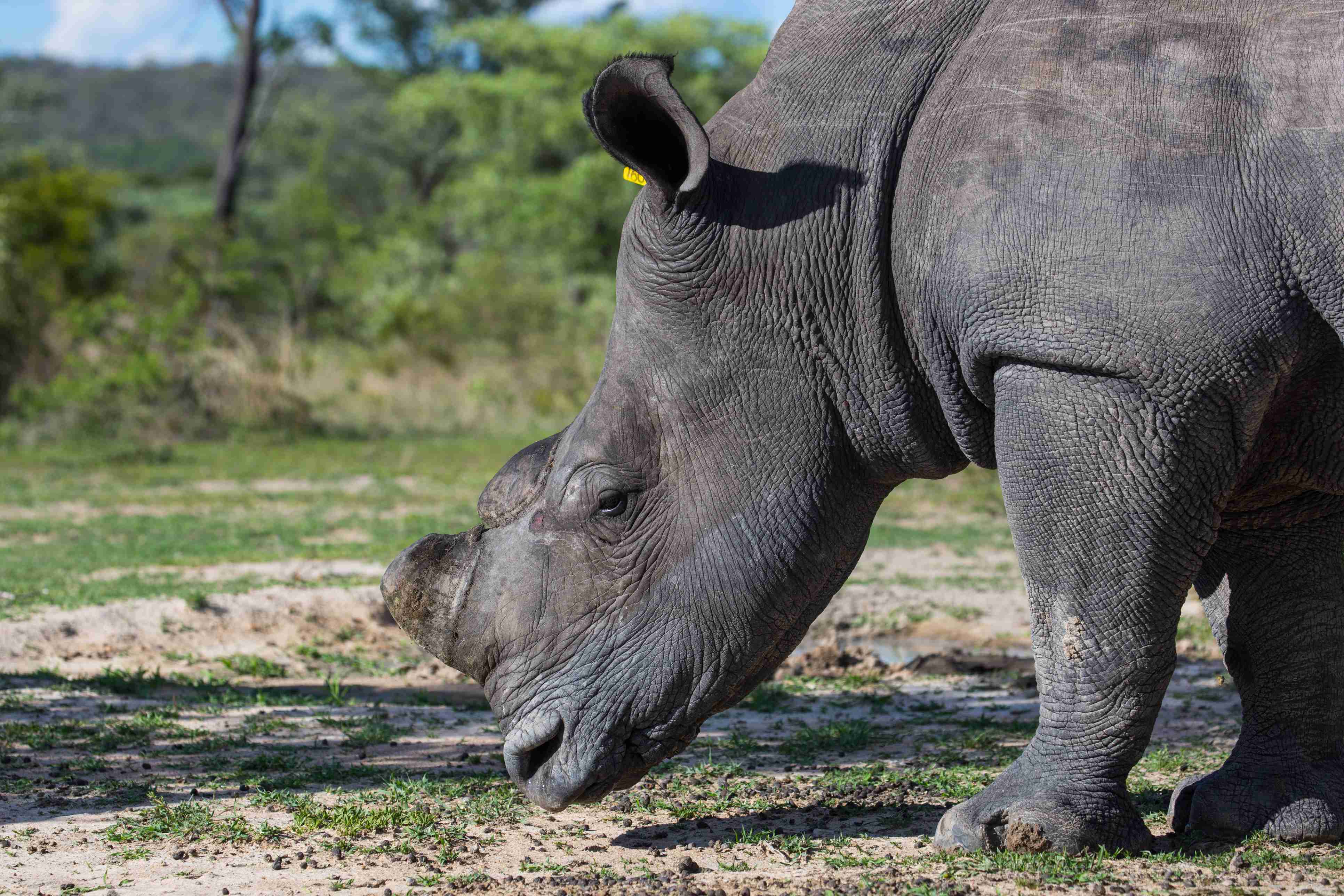
Explore the Great Zimbabwe Ruins
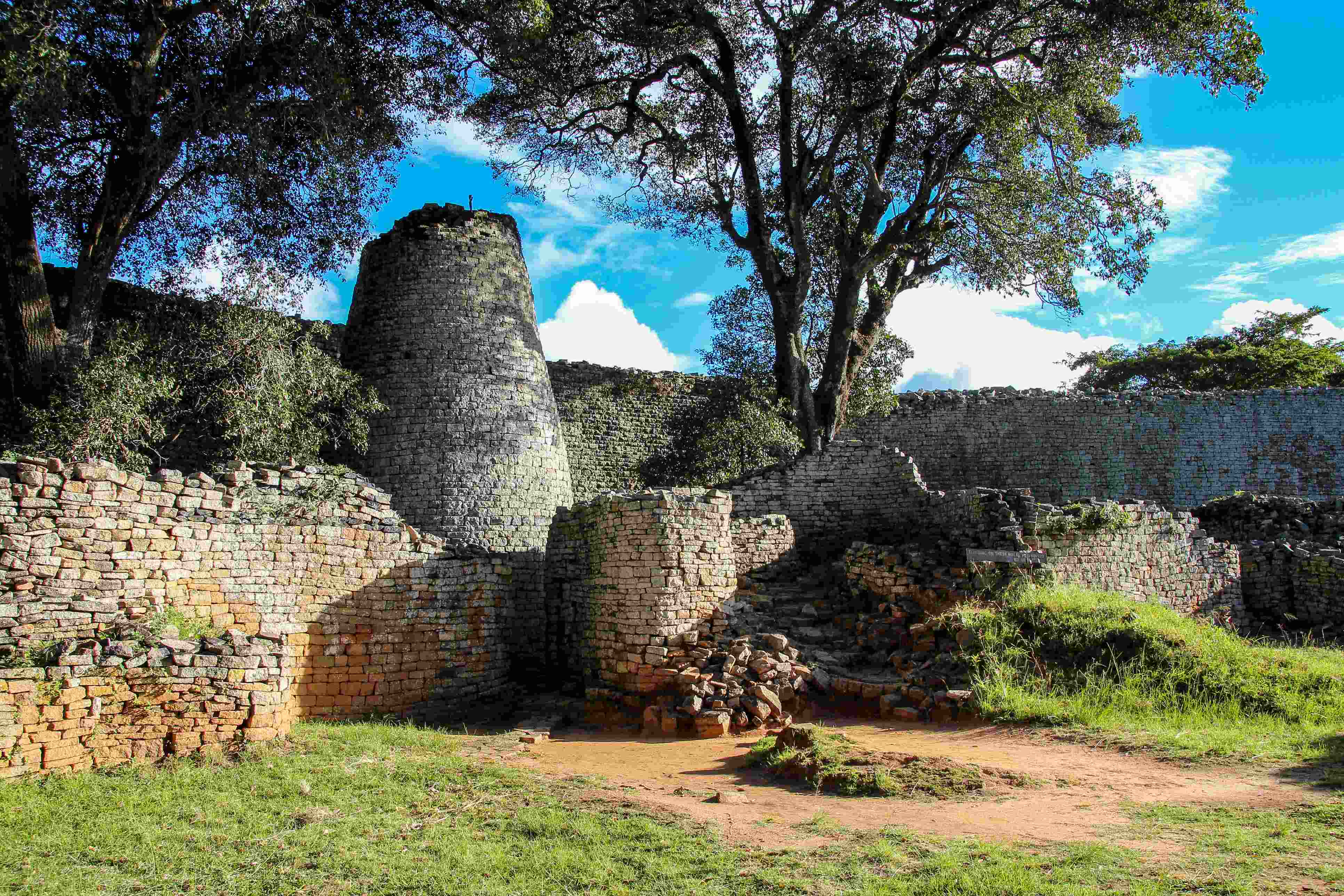
Discover the ancient city built between 1100 and 1450 that gave the country its name at an amazing archaeological site that stood as the capital of the Kingdom of Zimbabwe. Zimbabwe means “stone houses” in the Shona language, and you can see the undulating, meticulously stacked walls (built without mortar) of the largest stone complex in Africa built before the modern era (aside from ancient Egypt). Great Zimbabwe was a hub for a global trading network as evidenced by pottery remains from China and Persia and Arabic coins. In their arrogance, European colonisers thought the complex was too sophisticated to be built by Africans and looted and threw away artifacts from the area. It was not until 1980 when Zimbabwe achieved independence that its true origins were confirmed. Conservation and maintenance efforts continue today, but a millennia since it was built, Great Zimbabwe stands as a testament to the engineering prowess, complex society, and economic power of the Shona people.
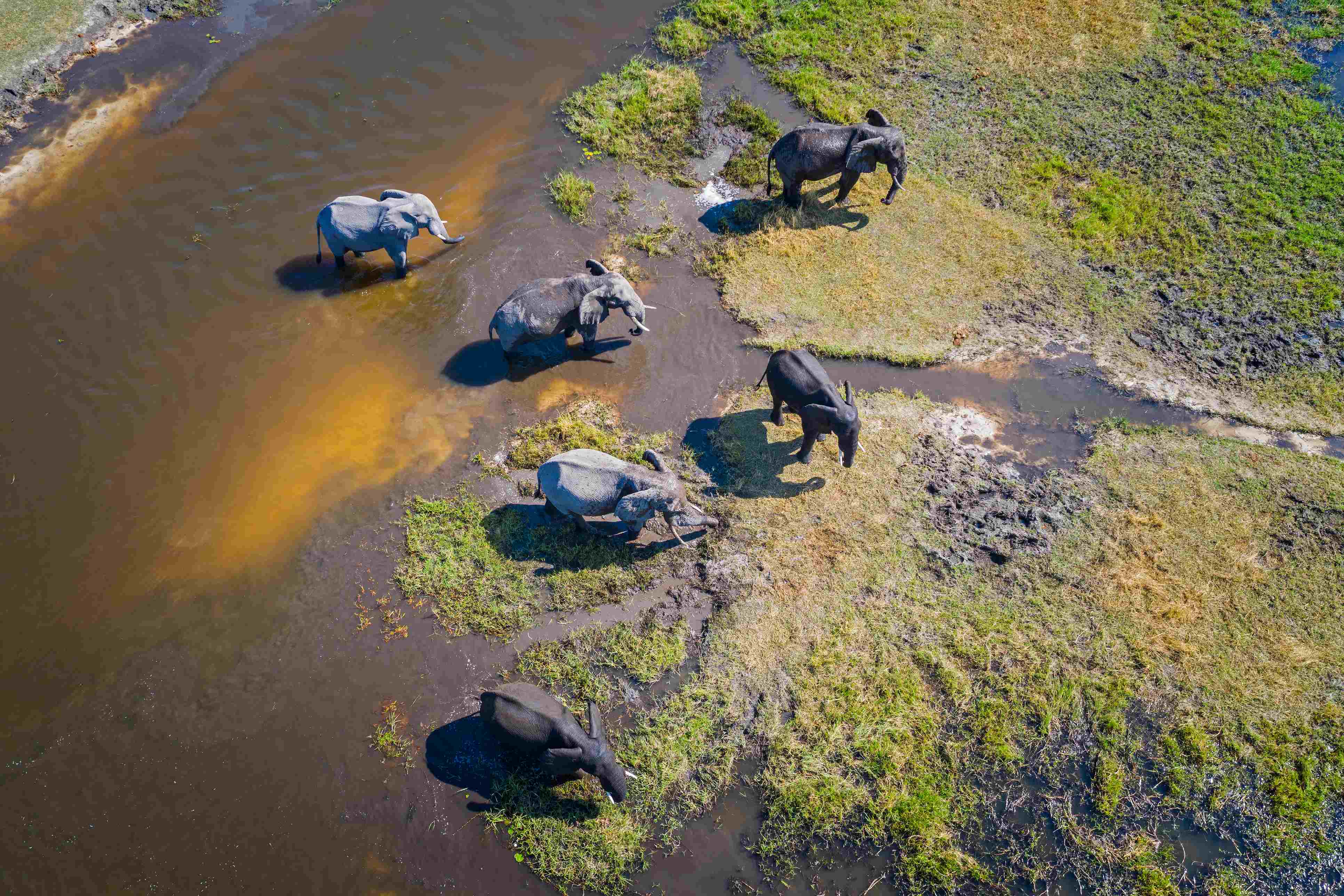
BOTSWANA
Botswana Introduction
If you’re looking for a luxe safari experience, Botswana deserves your attention. The country has focused on a responsible tourism strategy, keeping strict visitor limits and high environmental standards. Luxury camps and lodges focus on exclusivity and privacy. But, almost half of the country has been set aside for wilderness tourism, and you can find more affordable mobile safaris that take you camping from site to site. A trip to Botswana can feel completely wild, extravagant, and life-transforming all at the same time.
The ancestors of Homo sapiens are thought to have originated in Botswana 200,000 years ago, making Botswana a cradle of humankind. The San and Khoe people established agriculture about 2,300 years ago. The Tswana people, who make up 85% of the current population, arrived some time around 400 CE. In modern times, Botswana has enjoyed stability as the longest continuously-running democracy in Africa. In 1967, shortly after independence from Britain, diamonds were discovered on the edge of the Kalahari Desert, allowing the country to pull itself out of poverty and stop relying on external aid. Today the country seeks to diversify its economy as the reliance on diamonds, which still contributes about 30% of the GDP, is subject to the whims of the mineral market.
Game Drive in Chobe National Park
Botswana’s first national park is vast, covering 4,500 square miles (11,700 square kilometers), and boasts both the biggest concentration of elephants and general wildlife in Africa. You can see herds of buffalo, chomping hippos, sable and puku antelope, and 450 species of birds. The Chobe and Linyanti Rivers run through the park and provide a lifeline for the animals during dry seasons. Unlike many other national parks, wildlife roam freely unfenced in Chobe, even around campsites, so follow park rules and be mindful of your surroundings. You might experience an animal encounter of a lifetime.
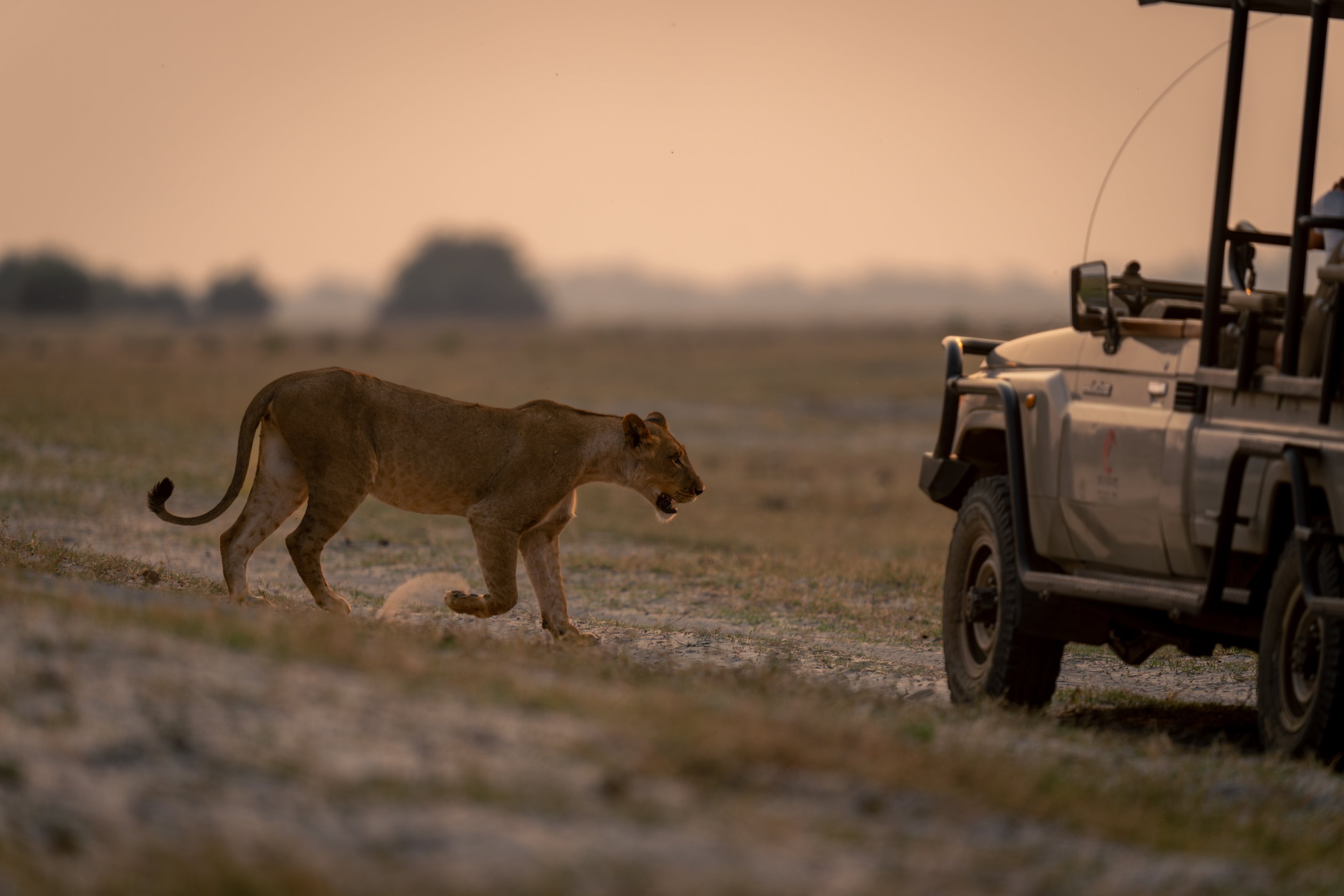
Take a Mokoro in the Okavango Delta
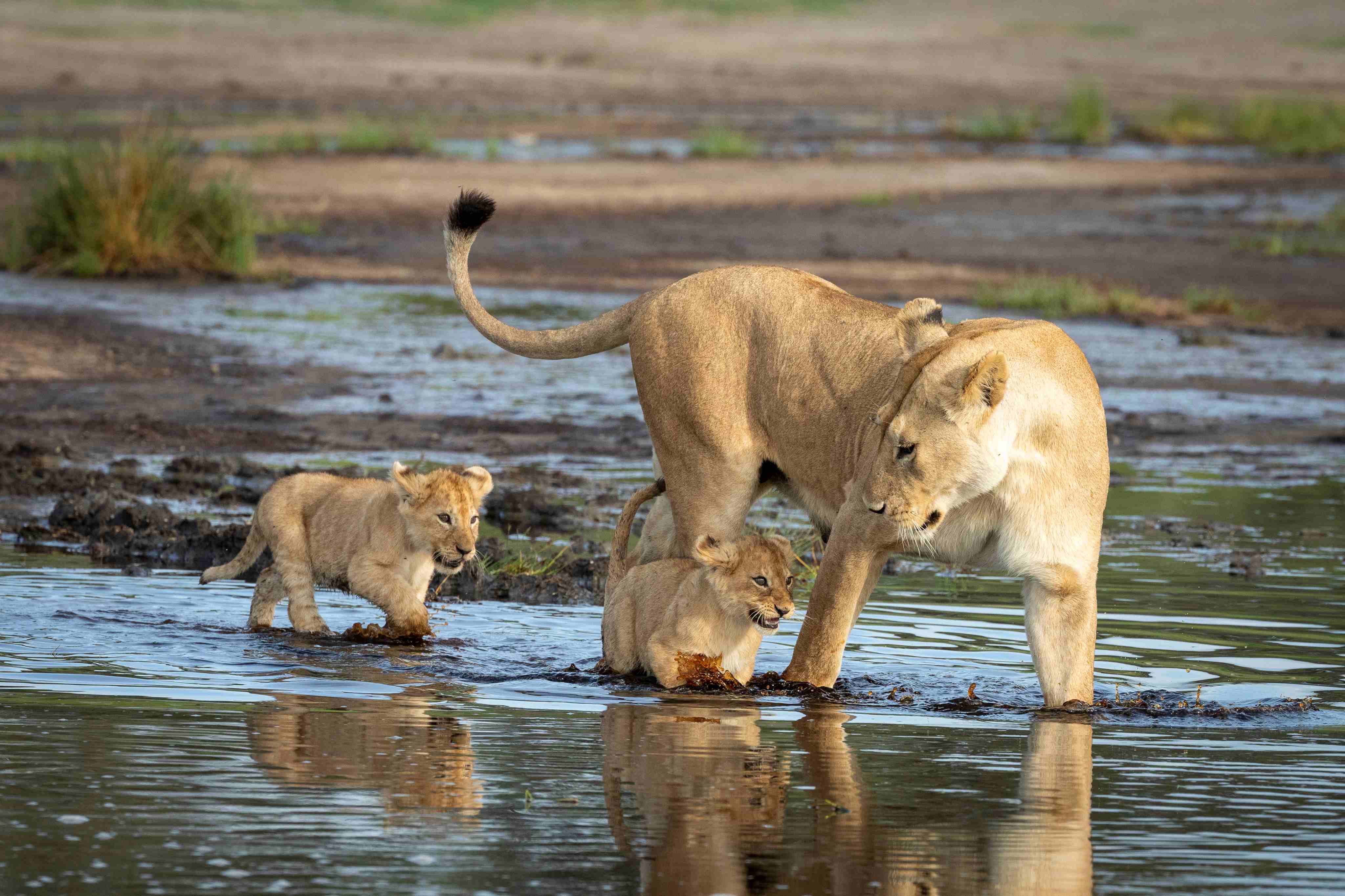
The Okavango Delta is the main attraction of Botswana, a nutrient-rich ecosystem created by the Okavango River flooding the Kalahari Desert to create waterways, grassland, floodplains, lagoons, and islands during the dry season. The resulting sanctuary for thousands of animals creates a spectacle of teeming wilderness, including African elephants, zebra, red lechwe, buffalo, and antelope. Traverse the crystal-clear waterways in a traditional dugout canoe of the BaYei people called a mokoro to get eye-level with the flora and smaller animals as you glide along unobtrusively.
See the Rock Paintings at Tsodilo Hills
Shamans of the San and Hambukushu people painted more than 4,500 pictographs on the rock walls over a span of 100,000 years from the Stone Age through the 19th century. The UNESCO World Heritage Site provides an archaeological record of human cultural development and remains of spiritual significance to the local population, some of whom serve as well-versed guides. The rock art has been preserved by its remoteness, the area’s low population, and the sturdiness of the quartz canvas.
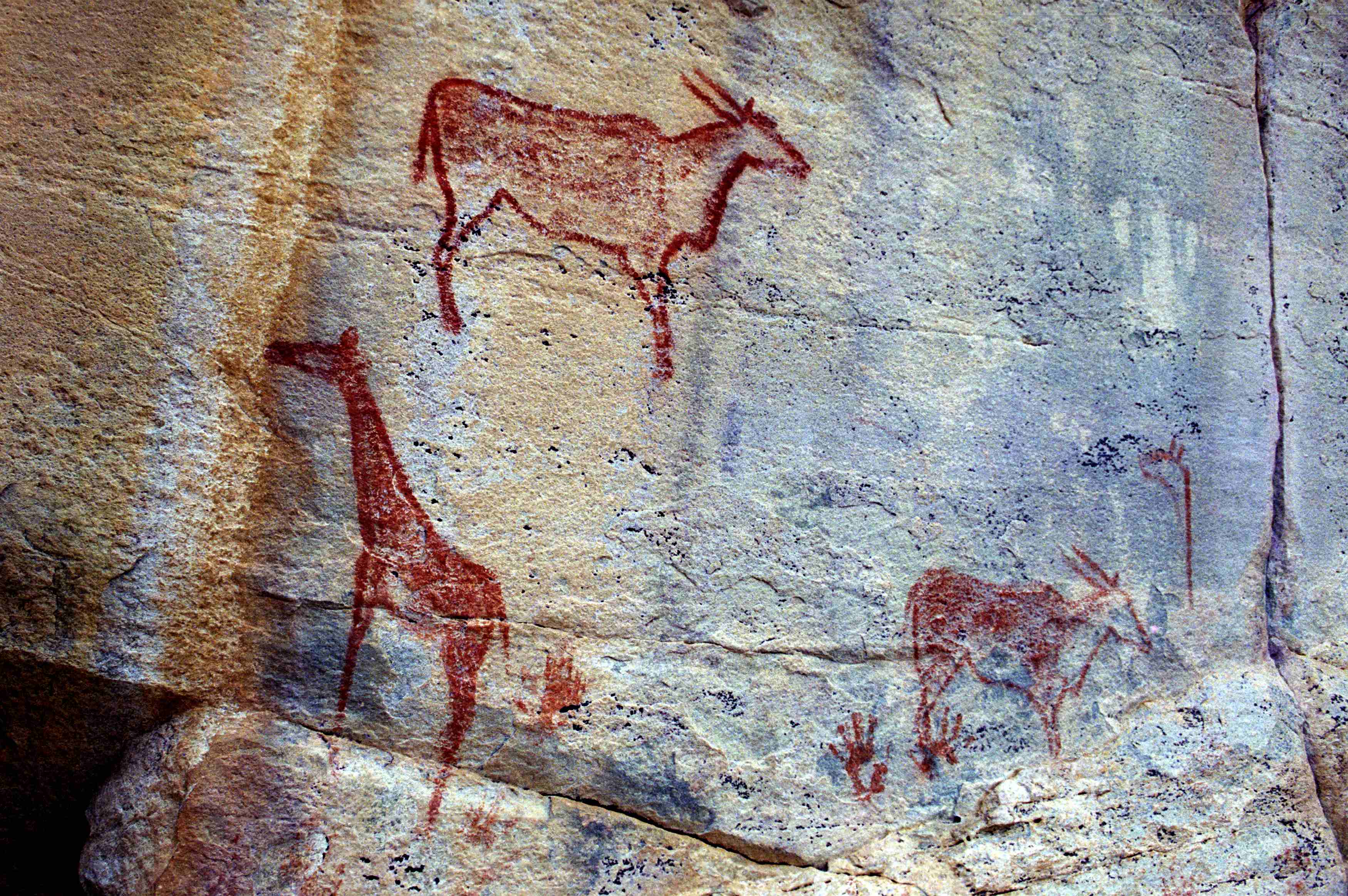
Spot Meerkats at the Makgadikgadi Pans
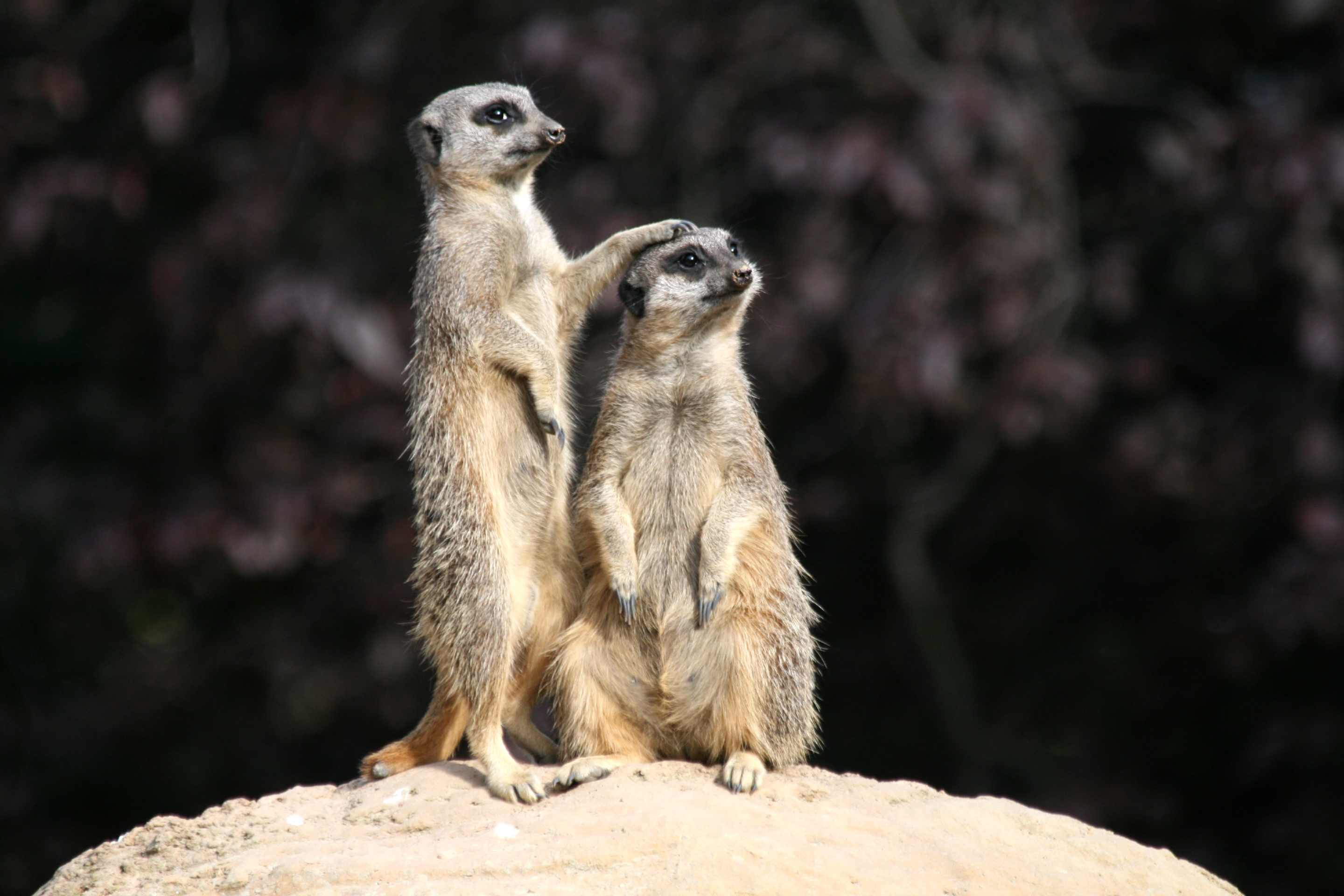
Makgadikgadi means “vast, lifeless land” in the Setswana language, and the salt pan remains of an evaporated superlake in the Kalahari Desert presents a white, lunar landscape of cracked earth that seems to never end. The silent desolation is awesomely surreal. During the wet season, flamingos breed along the pans and zebras, oryx, and wildebeest migrate to the area to dine on the new grass. In the dry season, you can arrange a trip to meet meerkat colonies that have become habituated to humans and occasionally use them as lookouts.
Meet the San People
In some of the camps around the Makgadikgadi Pans National Park, you can learn directly from the San Bushmen. Take part in an educational walk where the San explain their customs and rituals and show visitors how they track animals, make fire, set traps, build huts, and forage. It is an opportunity to learn from an indigenous tribe fighting to preserve their culture and way of life in partnership with conservation-minded lodges and camps.
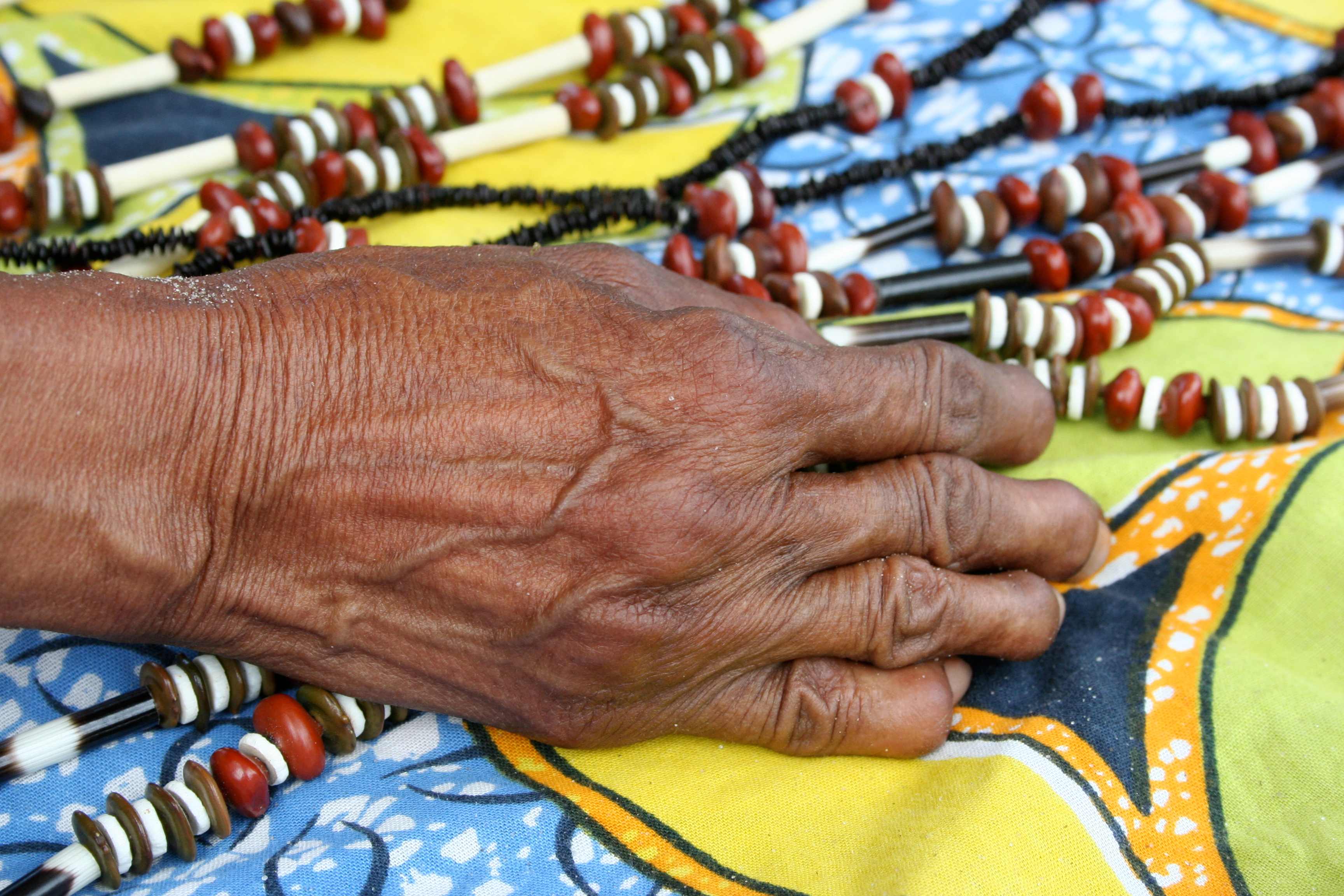
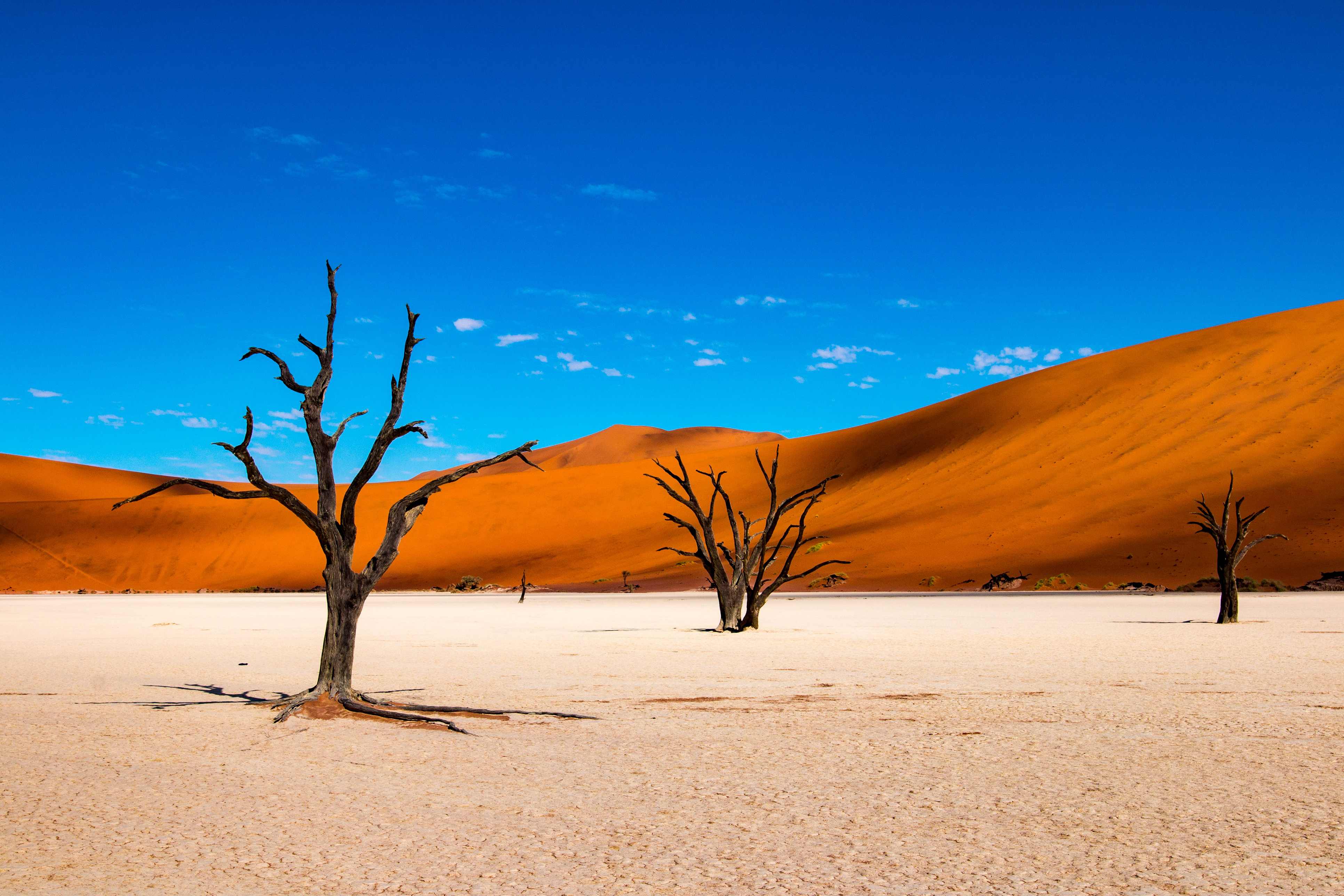
NAMIBIA
Namibia Introduction
One of the most sparsely populated places on earth, Namibia is where you can slow down and have the semi-religious experience of watching a lone elephant or a solo giraffe walking through the desert. The Namib Desert is estimated to be at least 55 million years old, the oldest in the world, producing some of the world’s tallest sand dunes. The country’s tallest mountain, Brandberg, is famous for producing exceptional quality amethyst and other quartz crystals.
For a country that has experienced significant political upheaval in the last hundred years – occupied by Germany from 1884, who perpetrated the first genocide of the 20th century against the Herero and Nama peoples from 1904-1908, then under South African control from 1915-1990 – Namibia’s ancient wind and sand brushes aside our human concerns and blankets the landscape with otherworldly serenity.
See Rhinos in Etosha National Park
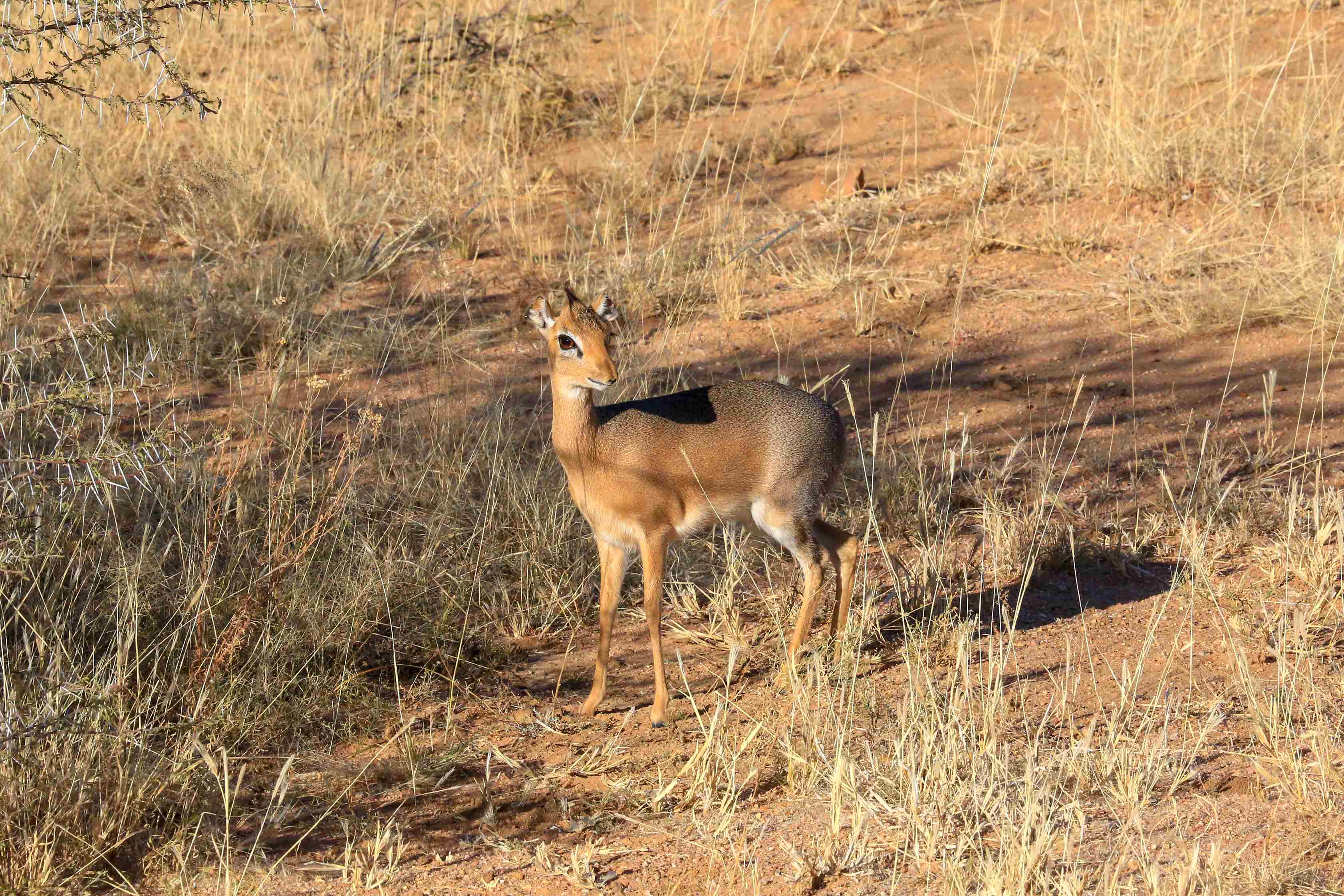
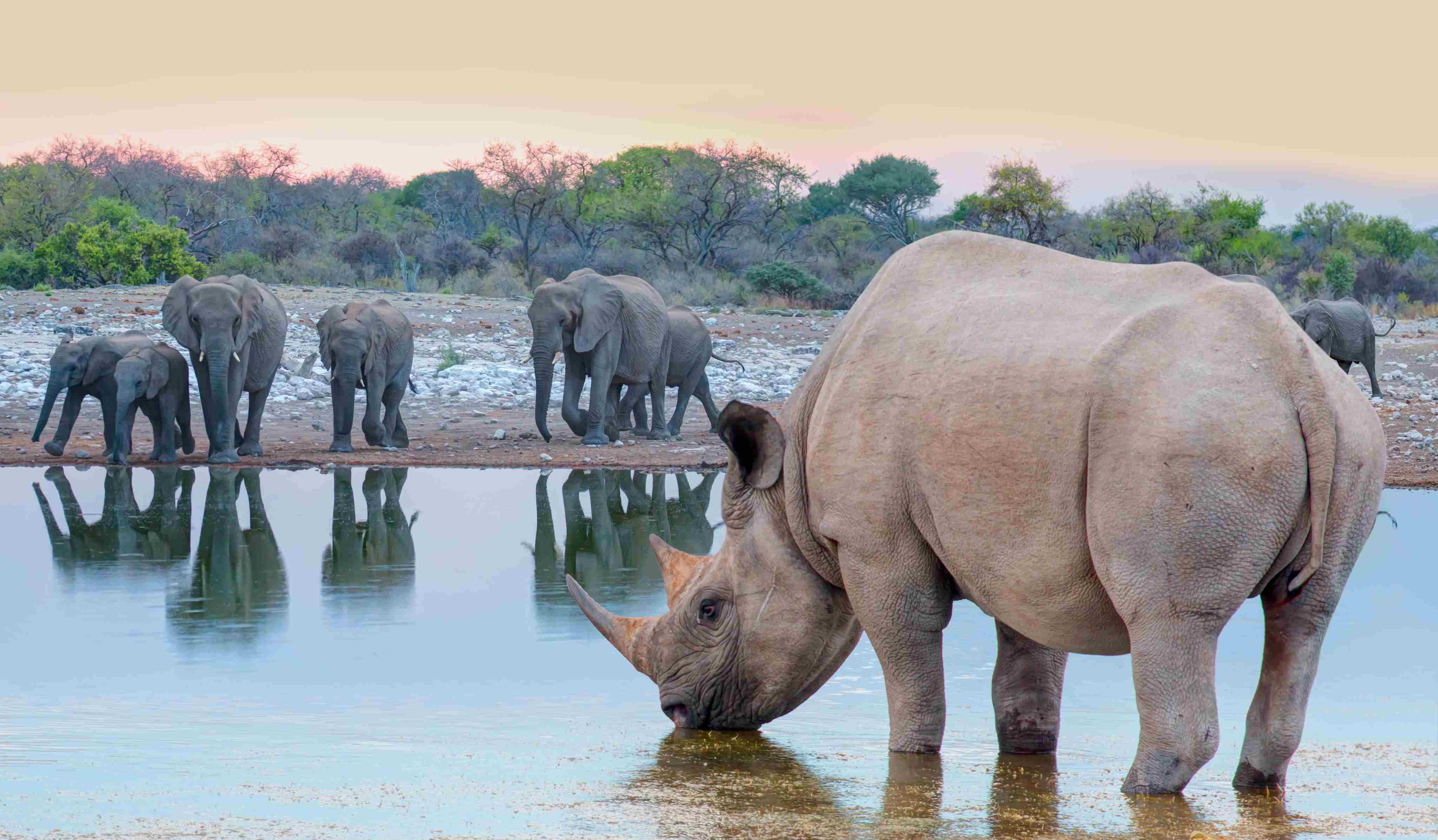
In the Kunene region of Namibia, Etosha National Park is home to the largest and most stable population of black rhinoceros. The park’s massive salt pan (which is visible from space) turns into a lake with grassy plains after enough rain. Catch site of flamingos, black-faced impalas, Damara dik diks (super cute, small antelope), and the rest of the Big Five.
Rock Climb in Damaraland
This mountainous region is home to Brandberg Mountain but also to free roaming black rhino and desert-adapted elephants. There are rolling plains, deep gorges, and a 260-million-year-old petrified forest. UNESCO Site, Twyfelfontein, is a collection of petroglyphs (rock engravings) that depicts mostly animals like rhinos, giraffes, elephants, impala, and ostriches. They were made by San hunter-gatherers over 2,000 years. Spitzkoppe is a collection of bald, granite peaks that curve and jut out dramatically, evoking its “Matterhorn of Namibia” nickname.
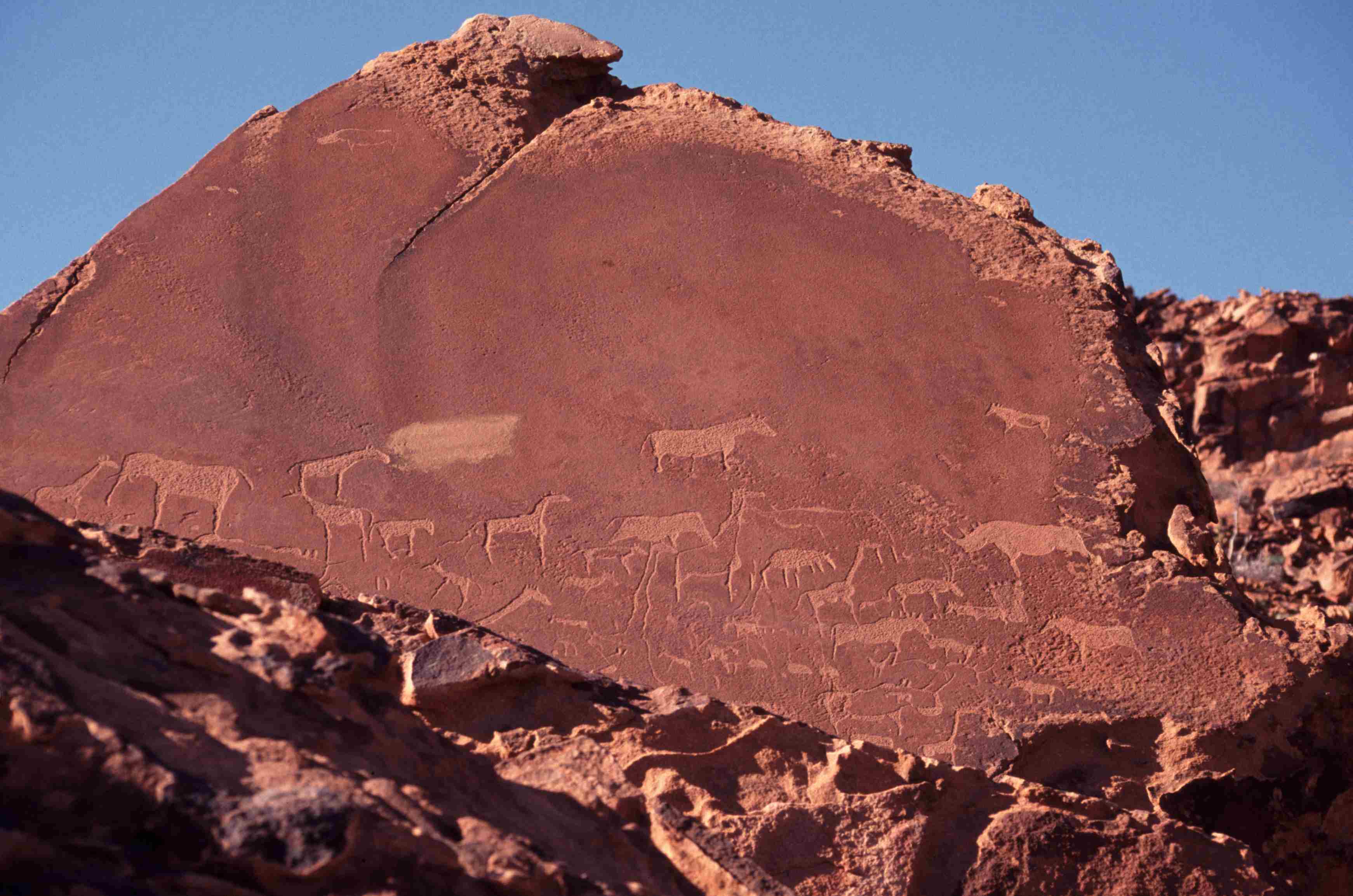
Visit the Skeleton Coast, if You Dare
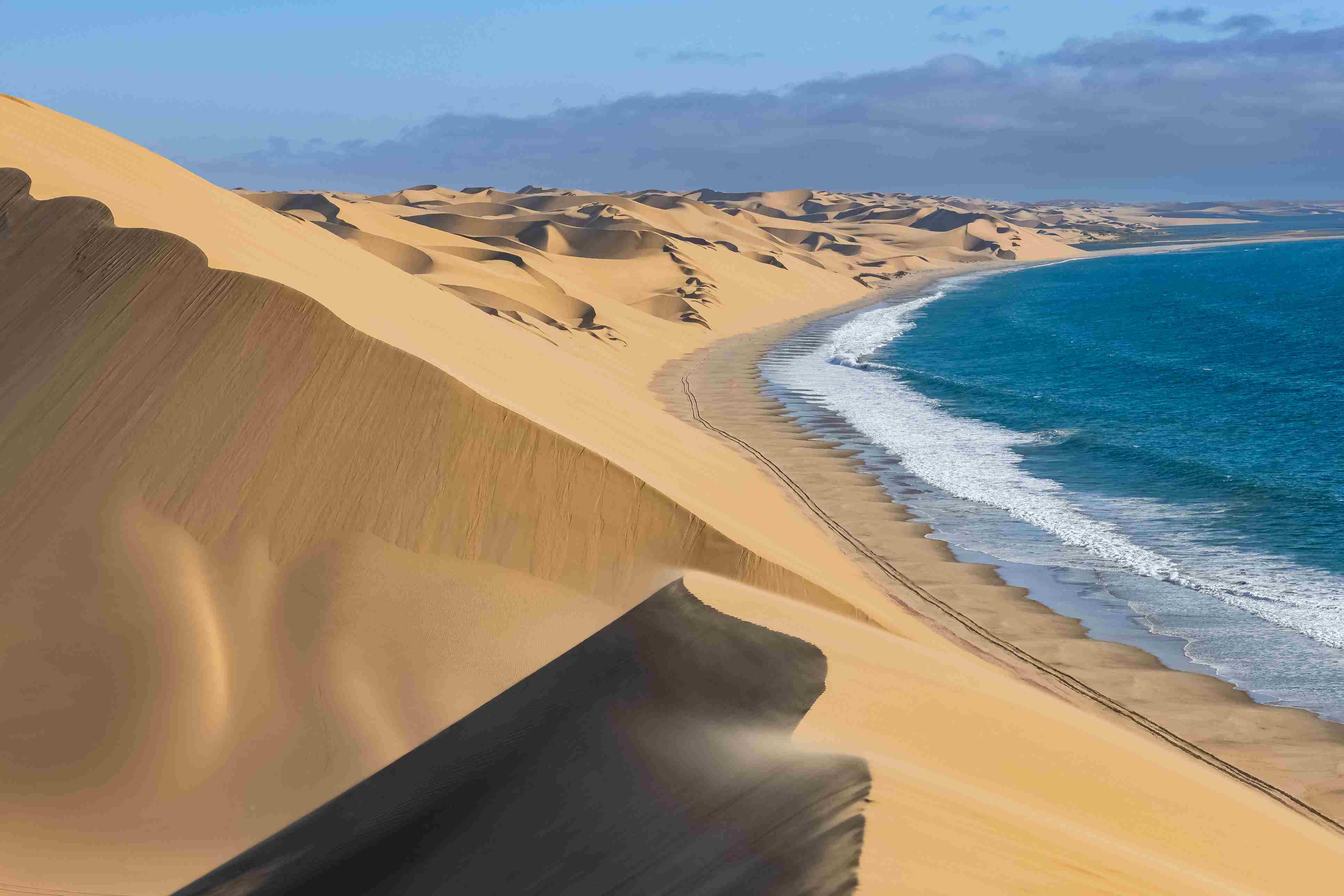
Travel to the northwest where the desert meets the coast and experience what is referred to as “the end of the Earth.” The Skeleton Coast was named for the 500 shipwrecks and myriad animal bones spat out by the Atlantic Ocean’s killer currents that were left to jut out of the sand in despair. While only a handful of shipwrecks can be seen now, the stark, barren landscape and deterioration of everything made by humans (signs and rusted oil rigs) make this a jaw-dropping adventure in one of the most remote regions in Africa.
Climb the Tallest Sand Dunes in Sossusvlei
The orange sand dunes of Sossusvlei in the Namib Desert are among the tallest in the world and known as star dunes because they have multiple arms from being blown from every direction. Dune 45 is located 45 kilometers (28 miles) from the Sesriem gate and stands 558 feet (170 meters) tall. The tallest one is Big Daddy at 1,066 feet (325 meters). It’s worth the climb for the views of the Dune Valley and the photo ops from the ochre-colored, razor-thin spines. From Big Daddy you can see the neighboring pan of Deadvlei or “dead marsh,” where the air is so hot and dry, the dead trees never decompose.
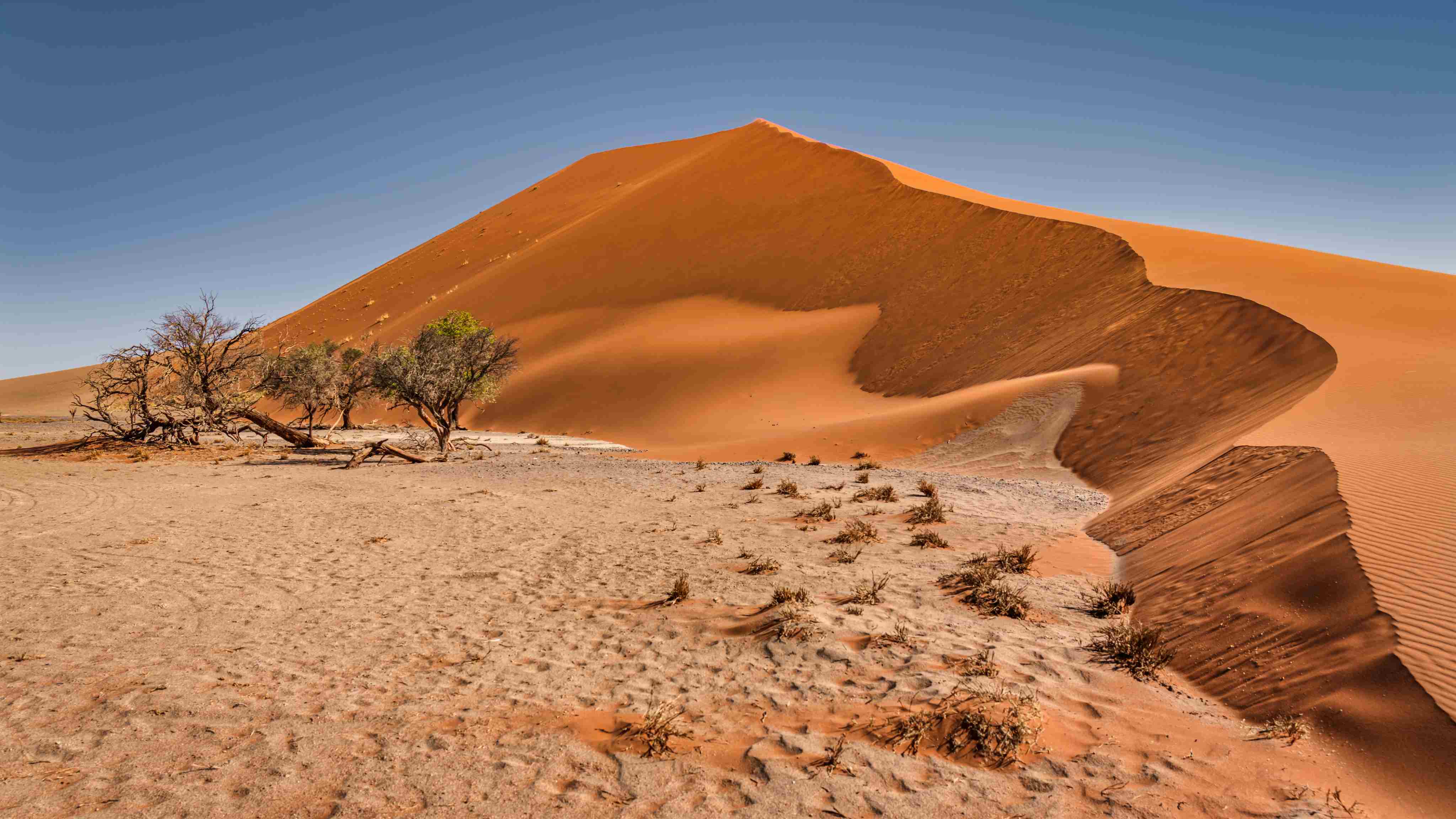
Take Photos at the Evocative Ghost Town of Kolmanskop
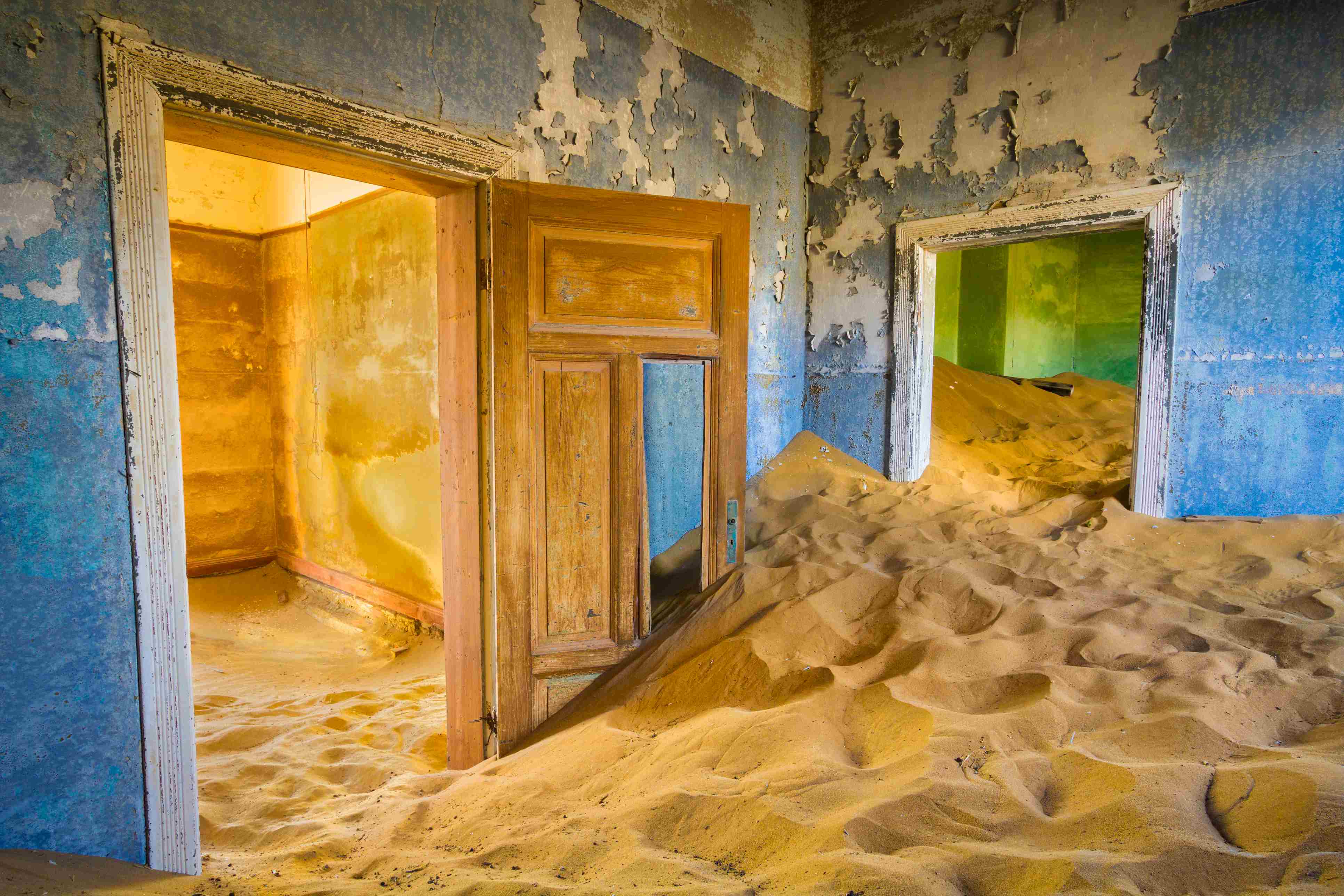
The desert is swallowing this once wealthy, German diamond mining town whose hospital had the first x-ray machine in the southern hemisphere. Enter rooms where dunes sweep in through windows and across doorways as if to erase both the colorful wallpaper and man’s hubris. In 1908, diamonds were discovered, and by 1912, the town was producing a million carats a year, almost 12% of the world’s production. Prospectors were getting rich picking loose diamonds off the desert, but by the 1930s they were mined out, and a new deposit was found in the south. Everyone left by 1956. You should visit before the elements take it forever.

Plan Your Trip











